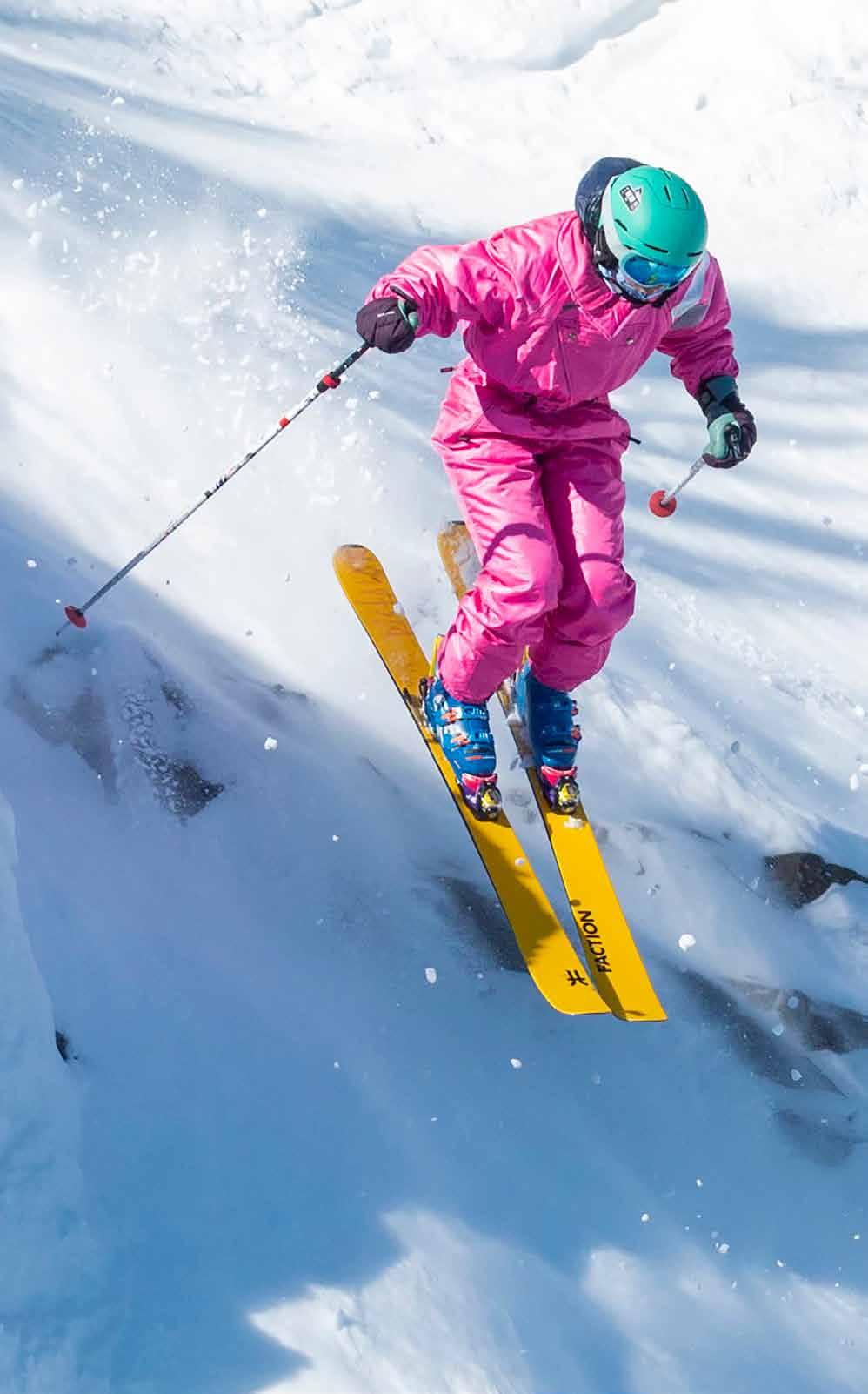

April 20 - May 3, 2023
Volume 14, Issue No. 8
Owned and published in Big Sky, Montana
PUBLISHER
Eric Ladd | eric@theoutlawpartners.com
EDITORIAL
MANAGING EDITOR
Jason Bacaj | jason@theoutlawpartners.com
DIGITAL PRODUCER
Julia Barton | julia@theoutlawpartners.com
STAFF WRITER
Jack Reaney | jack@theoutlawpartners.com
EDITORIAL CONSULTANT
Leslie Kilgore | leslie@theoutlawpartners.com
CREATIVE
SENIOR GRAPHIC DESIGNER
Trista Hillman | trista@theoutlawpartners.com
SALES AND OPERATIONS
CHIEF MARKETING OFFICER
Megan Paulson | megan@theoutlawpartners.com
CHIEF OPERATING OFFICER
Treston Wold | treston@theoutlawpartners.com
VP DESIGN & PRODUCTION
Hiller Higman | hiller@theoutlawpartners.com
MEDIA AND EVENTS DIRECTOR
Ersin Ozer | ersin@theoutlawpartners.com
MARKETING MANAGER
Sophia Breyfogle | sophia@theoutlawpartners.com
CONTENT PRODUCTION DIRECTOR
Mira Brody | mira@theoutlawpartners.com
MARKETING COORDINATOR

Tucker Harris | tucker@theoutlawpartners.com
SENIOR ACCOUNTANT
Sara Sipe | sara@theoutlawpartners.com
BUSINESS DEVELOPMENT LEAD
Patrick Mahoney | patrick@theoutlawpartners.com
CONTRIBUTORS
Daniel Bierschwale, Victoria Eavis, Jacob W. Frank, Gabrielle Gasser, Kirby Grubaugh, Neal Herbert, Rachel Hergett, Michael Hilliard, Dave Marston, John McGuire, Blair Miller, Christine Peterson, Tori Pintar, Benjamin Alva Polley, Tim Radigan, Jonathan Stone, Ryan Strother, Paul Swenson, Tate Marshall and Noah Weinstein.
OPENING SHOT 7 18
TABLE OF CONTENTS
MONTANA HEADWATERS LEGACY ACT GAINS MOMENTUM
The Montana Headwaters Legacy Act is inching ever closer to becoming a reality in part due to local nonprofits and business owners who lobbied in D.C. for the popular bill that would ultimately protect thousands of Montana river miles, including a 39-mile stretch of the Gallatin River.
WMPAC CELEBRATES 10TH SEASON WITH ‘BEST YEAR EVER’
John Zirkle and Cara Wilder from the Warren Miller Performing Arts Center sat down with EBS to describe the WMPAC’s growth since its opening in March 2013. Zirkle said 2022-23 was the best year ever for the performing arts hub which hosts professional, community and school productions.
A STATEMENT YEAR FOR BSSEF ATHLETES
The Big Sky Ski Education Foundation is wrapping up its 29th season, the first in which all three main programs—alpine, Nordic and freeride—qualified athletes for national events. According to Program Director Jeremy Ueland, this was probably one of the most successful years BSSEF has ever had since becoming a nonprofit in 1993.
LOCAL 3-YEAR-OLD TWINS COMPLETE 100-DAY SKI SEASON
ON THE COVER:
The Big Sky Ski Education Foundation wrapped up its season with nationally qualified athletes in all three of its programs—alpine, Nordic and freeride. Freeride skier Olive Wolfe did not make nationals but scored major style points. As she dropped a cliff on Obsidian during a February IFSA regional competition at Big Sky Resort, Wolfe made local fashion history in a pink snowsuit that once belonged to her mother.
PHOTO BY JULIA BARTON
EDITORIAL POLICIES
EDITORIAL POLICY
Outlaw Partners, LLC is the sole owner of Explore Big Sky. EBS reserves the right to edit all submitted material. Printed material reflects the opinion of the author and is not necessarily the opinion of Outlaw Partners or its editors. EBS will not publish anything discriminatory or in bad taste.
EBS welcomes obituaries written by family members or from funeral homes. To place an obituary, please submit 500 words or less to media@theoutlawpartners.com.
#explorebigsky
Aksel and Asher Miller, the 3-year-old identical twin sons of Alpine ski race champion Bode Miller, ticked off 100 ski days this season, likely becoming the youngest skiers to ever hit the milestone.
PLUS
EIGHTH ANNUAL BIG SKY SHOOTOUT GATHERS COMMUNITY
Local photographers and filmmakers filled the big screen for three showings on April 8 for the Eighth Annual Big Sky Shootout. The show—a festival of 16 short, local films—brought laughter, gasps, cringes, heckling comments, and tears from the crowd. The crowd-favorite film invoked the spirit of Chet Huntley, 50 years after he voiced his vision for Big Sky
LETTERS TO THE EDITOR
Letters to the editor allow EBS readers to express views and share how they would like to effect change. These are not Thank You notes. Letters should be 250 words or less, respectful, ethical, accurate, and proofread for grammar and content. We reserve the right to edit letters and will not publish individual grievances about specific businesses or letters that are abusive, malicious or potentially libelous. Include: full name, address, phone number and title. Submit to media@outlaw.partners.
ADVERTISING DEADLINE
For the May 4, 2023 issue: April 26, 2023
CORRECTIONS
Please report errors to media@outlaw.partners.



OUTLAW PARTNERS & EXPLORE BIG SKY
P.O. Box 160250, Big Sky, MT 59716 (406) 995-2055 • media@theoutlawpartners.com
© 2023 Explore Big Sky unauthorized reproduction prohibited
explorebigsky explorebigsky
@explorebigsky
LOCAL REGIONAL SPORTS OP NEWS A&E BUSINESS COMMUNITY OPINION FUN 4 12 16 25 29 33 34 36 45
SCAN FOR TOWN CRIER NEWSLETTER. DAILY NEWS, STRAIGHT TO YOUR INBOX.
9 21 29
Charlie Gaillard, owner of Lone Peak Cannabis, checks out marijuana plants in the greenhouses at partner brand Collective Elevation in Belgrade. PHOTO BY TUCKER HARRIS
ALL INFORMATION PROVIDED IS DEEMED RELIABLE BUT IS NOT GUARANTEED AND SHOULD BE INDEPENDENTLY VERIFIED. INFORMATION AND DEPICTIONS ARE SUBJECT TO ERRORS, OMISSIONS, PRIOR SALES, PRICE CHANGES OR WITHDRAWAL WITHOUT NOTICE. NO GOVERNMENTAL AGENCY HAS JUDGED THE MERITS OR VALUE, IF ANY, OF THE INFORMATION CONTAINED IN THIS ADVERTISEMENT OR ANY REAL ESTATE DESCRIBED OR DEPICTED HEREIN. THIS MATERIAL SHALL NOT CONSTITUTE AN OFFER TO SELL IN ANY STATE OR OTHER JURISDICTION WHERE PRIOR REGISTRATION IS REQUIRED OR WHERE SUCH AN OFFER WOULD BE PROHIBITED, AND THIS SHALL NOT CONSTITUTE A SOLICITATION IF YOU ARE WORKING WITH ANOTHER REAL ESTATE AGENT. NOTHING HEREIN SHALL BE CONSTRUED AS


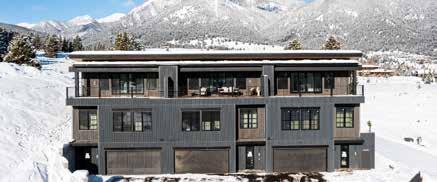
OR OTHER PROFESSIONAL ADVICE.

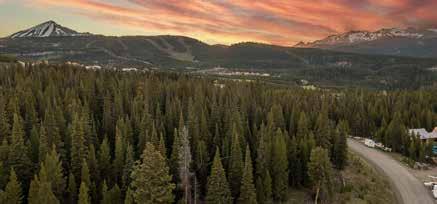

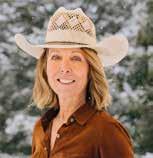
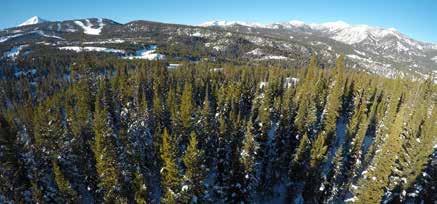
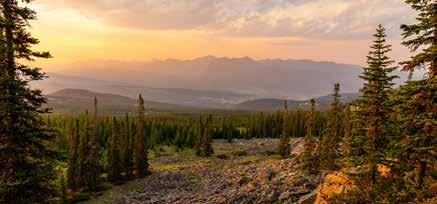
TAX, ACCOUNTING,
MEADOW VILLAGE 148 Crail Creek Court (On Big Sky Golf Course) 3 BED + 2.5 BATH | 2,986 SQ. FT. | $2,150,000 TOWN CENTER 199 Big Pine Drive #B (Fully furnished) 4 BED + 4.5 BATH | 3,138 +/- SQ. FT. | $2,950,000 Walking Distance to Town Center Amenities SPANISH PEAKS MOUNTAIN CLUB Big EZ Lot 34 Doolittle Drive 20 +/- ACRES | $5,500,000 SPANISH PEAKS MOUNTAIN CLUB Wildridge Lot 28, Mountain Valley Trail 1.05 +/- ACRES | $3,150,000 Price Reduced Martha Johnson VP of Sales Founding Broker martha@bigsky.com 406.580.5891 View all my listings at bigskyrealestate.com/team/martha-johnson TOWN CENTER 70 Upper Whitefish (Furnished with full apartment for additional rental income) 5 BED + 4.5 BATH | 3,769 +/- SQ. FT. | $2,495,000 Walking Distance to Town Center Amenities SPANISH PEAKS MOUNTAIN CLUB SCR Lot 212 Bitterbrush Trail 1.46 +/- ACRES | $3,750,000 Stunning Mountain Views SPANISH PEAKS MOUNTAIN CLUB 233 Wilderness Ridge 2.5 +/- ACRES | $3,500,000 TOWN CENTER 29 Upper Moose Hill Road 4 BED + 4 BATH + 2 HALF | 3,107 +/- SQ. FT. | $3,600,000 25 TOWN CENTER AVENUE | 995 SETTLEMENT TRAIL | 66 MOUNTAIN LOOP ROAD | 181 CLUBHOUSE DRIVE
LEGAL,
LOCAL NEWS IN BRIEF
FWP INVESTIGATES MOOSE HARASSMENT INCIDENT IN BIG SKY
EBS STAFF
A video that surfaced on social media showing two men in Big Sky approaching and touching a moose has triggered an investigation by Montana Fish, Wildlife and Parks.
Morgan Jacobsen, FWP’s Region 3 communication and education program manager, wrote in an email to Explore Big Sky that a game warden is piecing together what happened and whether any illegal activity occurred. No conclusions had been drawn as of early Thursday afternoon.
“In Big Sky… there’s wildlife there all the time,” Jacobsen told KBZK earlier in April. “If we’re going to share these spaces with wildlife, we have to live responsibly.”

Winter and spring are stressful times for wildlife. Encounters with people can stress animals and deplete their energy reserves, according to the FWP.
SPRING TEMPERATURES SET TO BRING HIGH RUNOFF, POTENTIAL FOR FLOODING
EBS STAFF
Spring weather has finally arrived in southwest Montana and the deeper than usual snowpack in the southern Beaverhead, Madison and Gallatin counties has led experts to expect stream flows nearly twice as high as usual.
Forecasts for those areas show an expected streamflow of between 120% to 180% of normal, according to the Natural Resources Conservation Service’s monthly water supply outlook report.
“Many of those forecasts are the highest or second highest in 10 years and comparable to 2018 and 2014,” NRCS Water Supply Specialist Eric Larson stated in the release.
Gallatin County officials encourage residents to prepare for potential flooding by checking with their insurance company about flood coverage, and removing any obstructions to ditches, culverts and other waterways.
BALLOTS FOR BIG SKY SCHOOL DISTRICT ELECTION MAILED OUT
EBS STAFF
Ballots for the 2023 school and special district election were mailed out on April 14, giving voters in the Big Sky School District the chance to decide on a $19.85 million bond that would bring indoor athletic facilities up to the standards of Montana Class B.
The election is a mail ballot election, though active registered voters can vote in-person at the Gallatin County Elections office at the county courthouse on Main Street in Bozeman. Ballots must be received at the county elections office or a designated place of deposit by 8 p.m. on May 2, according to a Gallatin County press release.
BOZEMAN IS GETTING A CHICK-FIL-A (PROBABLY)
EBS STAFF
On April 3, word dribbled out online that the inevitable was happening: Bozeman is getting a Chick-fil-A.
EBS followed up with Chick-fil-A corporate to verify that it wasn’t a prank being played on the hungry people of the Gallatin Valley. The statement we received confirmed that Montana “is an area of growth and opportunity for the brand” and the company is “actively pursuing a new location in Bozeman at I-90 and 19th Avenue,” although the statement noted that the company is early on in the process.
So, there you have it. If things break a certain way, you’ll have an opportunity in the not-too-distant future to buy an Arnold Palmer with that perfect pellet ice at our area’s very own Chick-fil-A.
GALLATIN COUNTY COMMISSION APPROVES $458K IN FUNDING FOR OPEN LANDS PROJECTS
EBS STAFF
The Gallatin County Commission unanimously approved $458,223 in funding for six projects aimed at improving open lands in Big Sky, Bozeman, West Yellowstone, Four Corners and Three Forks using money from the Open Lands Program, according to an April 18 press release from the county.
Included in the funding is $100,000 for the Big Sky Owners Association’s restoration on the Little Coyote Pond and West Fork River. The restoration and revegetation project will improve fishery health in the Little Coyote Pond and West Fork River.
The funding comes from the Gallatin County Open Space Levy, which was approved by voters in 2018 and is expected to bring in over $2.44 million through the end of 2023.
Explore Big Sky 4 April 20 - May 3, 2023
May 2nd
Special Purpose District & School Elections


Ballots were mailed on April 14, and must be received by 8 pm on May 2. This election is a mail ballot election, meaning there will be no polling places open on Election Day. For information on how to return your completed ballot, see your ballot packet.

A biweekly District bulletin BETTER TOGETHER V TE
Gallatin County: gallatincomt.virtualtownhall.net/elections-department 406-582-3060
Madison County: madisoncountymt.gov/159/Election-Information 406-843-4270 Info@ResortTax.org | ResortTax.org | 406.995.3234 | Administered by the Big Sky Resort Area District, a local government agency, Resort Tax is a 4% tax on luxury goods & services. OUR VISION: “Big Sky is BETTER TOGETHER as a result of wise investments, an engaged community, and the pursuit of excellence.”
For late registration and other questions, contact your county elections office.
For voting details or to track your ballot status, visit the My Voter Page at: MyVoterPageMT.com
LETTER TO THE EDITOR

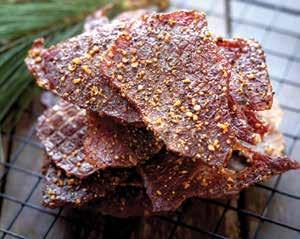
Dear Editor, Ballots to vote on yet another Nineteen Million Eight Hundred Fifty Thousand Dollars ($19,850,000.00) Big Sky school Bond issue have been mailed. Again, and essentially every year, the school is asking residents to pay for athletic facilities and projects: another gym (this will be the third gym), locker rooms, and athletic support (vague-what is this?). In a school this size, is athletics truly more important than teachers and educational quality? As property owners, we will be assessed every year for 17 years to pay the interest on the Bonds. The Bond Election does not specify

how much this costs each year. Is it reasonable to ask for a vote on this without us having any idea what this might cost each of us?? This will of course be based on the value of our property. Obviously, people renting or leasing housing WILL NOT be subject to these charges. However, renters and lessees should definitely expect their rent to increase based on the property owner’s increased cost to pay off the Bond interest.
This is one more example of the school having NO consideration regarding the property owner’s tax expenses which rise every year. One example of many unnecessary projects is the football field lights
to the tune of approximately $100,000. Because of the blight on adjacent homeowners due to light pollution, these were recently deemed to be “out of compliance” by the Gallatin County Commission. The school has chosen to ignore this determination and continue to use the lights.
The school must be as fiscally responsible as each of us are in these times of inflation and rising costs and taxes. I say vote NO and have the school be as fiscally responsible to the community as should be expected.
Alan Shaw, Big Sky

Explore Big Sky 6 April 20 - May 3, 2023
LOCAL
YSFOODS.COM YSFOODS.COM
The proposed indoor athletic facility beside Lone Peak High School would triple seating capacity and feature an indoor walking track on its perimeter. COURTESY OF BSSD
MONTANA HEADWATERS LEGACY ACT GAINS MOMENTUM DURING CONGRESSIONAL SESSION
PUBLIC INPUT AND BIPARTISAN SUPPORT NEEDED TO PASS THE MHLA
BY RYAN STROTHER EBS CONTRIBUTOR
The Montana Headwaters Legacy Act is inching ever closer to becoming a reality.
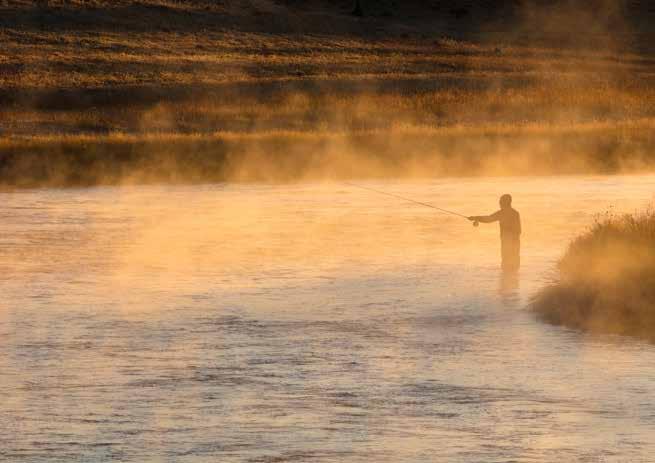
The renewed momentum is due in part to local nonprofits and business owners who worked for four days in Washington, D.C. earlier this spring to build consensus for the popular bill that would ultimately protect hundreds of Montana river miles.
Some Republican members of Montana’s Congressional delegation have signaled that they’re open to supporting the bill in the upcoming session, which could give it the bipartisan support needed to make the bill a law.
“This bill is as popular as beer and huckleberries in Montana, really,” said Scott Bosse, the Northern Rockies Regional Director of American Rivers, an organization created to help protect rivers under the Wild and Scenic Rivers Act. The bill is supported by more than 80% of Montanans.
The MHLA would designate 20 rivers in the northern Yellowstone Ecosystem as Wild and Scenic, preserving their free-flowing nature and protecting their wild, scenic, or recreational values. The designation would prohibit the federal government from permitting any new dam projects on the designated sections, and water quality would need to be maintained or improved.
The act would allow public access and recreation— including motorized recreation—to continue as currently managed.
Since the introduction of the Wild and Scenic Rivers Act, the law has been amended 32 times to designate additional rivers and protects 12,709 miles of rivers in 40 states and Puerto Rico. But 42 years passed without an additional Wild and Scenic designation in Montana, until a proposed dam on East Rosebud Creek expedited protection efforts. In 2018, 21 miles of the creek were protected under the act.
The East Rosebud legislation was originally part of the MHLA. But the imminent threat of dam development led lawmakers to introduce it separately. Protections for East Rosebud were fervently supported by local landowners and Montanans, and passed with unanimous support from the Montana delegation, including current senators Jon Tester and Steve Daines.
If the measure passes, extraordinary reaches of the 20 rivers ranging from the Madison River in the west, the Smith River in the Little Belt mountains, and east to Rock Creek in the Beartooth mountain range will be protected in perpetuity. The MHLA would more than double the number of designated river miles in Montana.
The bill was first introduced in 2020 by Tester. This will be the third time the bill has been introduced to Congress. Tester introduced the bill into the 117th Congressional session in 2021, where it stalled in committee due in part to skepticism from Daines.
“If you actually look at the way Sen. Daines has voted on public lands bills since he got elected to Congress, oftentimes he starts out being skeptical of additional federal protections. It's kind of in his DNA to be suspect of new federal protections.
“But oftentimes, at the end of the journey, he hops on board and votes the right way. I hope he sees us trying to address every concern he's had, and I hope he understands that we're meeting with the handful of groups that have opposed this legislation to try and address their concerns,” Bosse said.
The third time’s the charm in garnering bipartisan support for the bill
Advocates remain optimistic the values of the MHLA align well with the desire of Montana politicians on both sides of the aisle to listen to their constituents and protect Montana’s rivers and recreation economy.
Eric Ladd, board member of the Gallatin River Task Force and chairman of Outlaw Partners (the publisher of Explore Big Sky), is optimistic that with enough public support, and perhaps some additional outreach from Montanans, Daines as well as house representatives Matt Rosendale and Ryan Zinke will show support for the bill this session.
“It seems fitting that on the 30th anniversary of ‘A River Runs Through It’ that this legislation gets passed to protect some of the very rivers featured in the movie,” Ladd said.
Recently, executives from the Greater Yellowstone Coalition, American Rivers, Gallatin River Task Force, American Whitewater, Outlaw Partners and a Missoula-based fishing guide recently met with the Montana Delegation to garner support during the upcoming Congressional session. Representatives from organizations supporting the MHLA came back from Washington with optimism the bill will receive support from the Montana Delegation this session, but called upon the public to call and write to their representatives and show their support.
“Sen. Daines’ office is decorated in pictures of the rivers that this legislation protects. I just feel that [the Republican members of the delegation] need to hear from Montanans, that Montanans want this
done and they want it done this year,” Ladd said. Tester remains as committed as ever to designate more river miles in Montana as Wild and Scenic. In support of the bill, Tester cites the $7.1 billion outdoor economy in the state.
“This bill was crafted by conservationists, outfitters, and recreationalists alike, and it will ensure that some of our most pristine rivers will be enjoyed by the next generations of young Montanans, and untouched by special interests for years to come,” Tester said.
Congressman Ryan Zinke has not publicly taken a position one way or another on the bill, but advocates are hopeful they’ll receive his support after recent meetings.
“[Zinke] is still vetting the legislation and will have some fact-finding meetings this summer on the proposal once we wrap up the appropriations bills. The congressman welcomes the public’s input. They can submit comments on the website at zinke. house.gov,” wrote Heather Swift, Zinke’s Chief of Staff.
Daines has not taken a firm position on the bill or extended comments beyond the 2022 committee hearing, but says he remains open to hearing from Montana citizens.
“If the bill is reintroduced this Congress, Sen. Daines will be looking at the text and listening to stakeholders,” said Rachel Dumke, press secretary for Daines’ office.
Congressman Rosendale has not made a public statement about his position on the bill, and did not respond to Explore Big Sky’s request for comment by the deadline of this story.
Tester will keep pushing for the Montana Headwaters Legacy Act.
“I’ll keep fighting until we get it across the finish line, and I’m hopeful that my colleagues on the other side of the aisle will join me to help to make it happen,” Tester said.
LOCAL Explore Big Sky 7 April 20 - May 3, 2023
A fly-fisherman casts on the Madison River. Portions of the river would be protected by the MHLA, if passed. PHOTO BY JACOB W. FRANK
LOCAL DISPENSARIES REFLECT ON 15 MONTHS OF LEGAL WEED
BY JACK REANEY
BIG SKY—As Treasure State tokers celebrate 4/20, a cultural date observed by cannabis users, EBS spoke with local players in Montana’s young recreational marijuana industry.
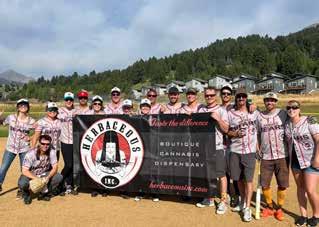
Montana dispensaries have sold over $269 million of recreational marijuana since it became legal in January 2022. Call it dope, weed, pot, reefer, Mary Jane, devil’s lettuce—the crop has generated $53.9 million in state tax revenue in 15 months, and dispersing Montana’s pot of gold has become a topic of debate.
Big Sky has a handful of green plus signs. Herbaceous, Lone Peak Cannabis Company and Greener Pastures operate within a stone’s throw of each other in Westfork Meadows. Honey Sour is posted one mile east of the cluster, and Double Dogs sells beside U.S. Highway 191 near the Conoco. In January, three of the five shops located in Big Sky made Cannabis Now Magazine’s list of Montana’s best dispensaries.
Charlie Gaillard moved to Big Sky in 2010 and opened a medical-use dispensary called Lone Peak Caregivers. He was drawn to Big Sky by the excitement felt in the industry at that time. His business—now recreational and called Lone Peak Cannabis Company—has since expanded to Ennis, West Yellowstone, Bozeman, and soon, Billings.
The state voted in favor of Initiative 190 in November 2020, which legalized adult recreational use in Montana, effective January 2022. On that New Years Day, Gaillard broadened his business’ name and prepared for a higher volume of customers, leaning on a decade of experience.
Legalization also allowed businesses to trade plants and products with other Montana businesses. In the state’s medical-only era, everything had to be grown internally. Gaillard said that helped LPC expand its volume and offerings, but the company still grows most of its product in a greenhouse beside U.S. Highway 191.
He’s proud that LPC can support between 20 and 25 members of the local workforce, and while he’s dealt with some turnover, Gaillard said LPC has been able to build a strong base team since business expanded into recreational sales.
“The biggest change is having more professional people on staff, from other industries that have other skillsets needed to operate in this industry. Everything has become magnified due to the recreational market,” Gaillard said.
According to the Montana Department of Revenue’s cannabis sales report website, March 2023 was the highest month in Montana’s short history of legal weed sales. With more than a $2 million uptick from February 2023, monthly

adult-use sales broke $20 million for the first time. Gaillard said the industry has created considerable jobs in government and individual businesses.
Still, he assured EBS that lobbyist groups are fighting to shut down the recreational segment of Montana’s marijuana industry. Despite an established market that is proven and safe, Gaillard said, opponents are willing to decline tens of millions of dollars in annual state tax revenue.
“I will tell you that the biggest threat to the industry has been tabled or voted against, so I don’t think we’re in jeopardy at this point and time,” Gaillard said.
Westley Correa, co-founder of Bozeman-based Double Dogs Cannabis, said that legalization has come with pros and cons—mostly opposing viewpoints and perspectives. But he believes the public has spoken in favor of the drug.
Double Dogs entered the Big Sky community in the summer of 2022, taking over the dispensary previously operated by Betty’s Roadside Provisions along U.S. Highway 191.

Local for now
Correa is more concerned about a shift in state policy set to occur in the coming months. Montana will begin allowing out-of-state funding to permeate Montana’s recreational space.
“I would really hope that Montana puts a cap on [dispensary] licenses,” he told EBS in a phone call, pointing to the liquor licensing model. “If we do it like that, it would help the people who built the foundation... to be able to maintain our growth in such a volatile market.”
Without limits, Correa is worried Montana’s market could become saturated quickly, pricing out small Montana-based businesses like his own.
He's proud to share that Double Dogs uses no-till farming and is one of the few soil-based growers in Montana—he said most dispensaries use a saltbased growing technique.
“We don’t grow the most weed, we just grow good weed,” Correa said, speaking to the company’s motto of “quality over quantity.” He said it’s a “work hard, play hard kind of company” full of outdoor enthusiasts and their work allows them to keep that passion alive. Employees love taking shifts in Big Sky, too, for the outdoor activities and the chance to hang out with store manager Karina DeGidio.
“She’s amazing and makes it a fun place to work,” Correa said. “We don’t have to look for employees. The environment is conducive to a healthy workplace.”
In April 2020, Tanya Simonson opened Herbaceous in Westfork Meadows. Herbaceous planned to open in Big Sky in 2019, but Simonson had to pivot around a policy that prevented dispensaries from operating on the ground floor in Town Center.
She said Herbaceous is known for its slow cured, always-fresh flower. She’s proud that the business is family-owned, and that her Big Sky store contributes to the community by hanging work by local artists, participating in the softball league— the Herbaceous Smokey Bears reached the 2022 championship—and sponsoring events like the recent Big Sky Shootout.
Simonson, her brother and his wife founded Herbaceous in Butte in 2017. They still grow in Butte, but since the recreational market opened, Simonson began ordering wholesale to keep up with demand.
“It was a lot of learning how to adapt,” Simonson told EBS in a phone call. “We weren’t sure what was going to happen after Jan. 1. We knew it was going to be busy, but it ended up being beyond our expectation. I think we did a pretty good job—we managed to get enough people working for us.”
Since recreational sales began, Simonson expanded her Big Sky team from one co-worker to six or seven. She said most of her bud-tenders work parttime, and the shop is usually busy enough to require two on shift.
Simonson looked into taking loans to invest in employee housing, but because marijuana remains federally illegal, she was stopped. Given Big Sky’s staffing challenges, she’s glad the Herbaceous team has been consistent.

Simonson added her concern about the pivot to allow out-of-state funding. She told EBS that a lot of small businesses might not make it, and that Big Sky could see any number of new dispensaries open.
“They gave us two years,” Simonson said, referring to the Montana Department of Revenue. “Everything we grow [and] sell, has to be made here. That ends at the end of 2023.”
LOCAL Explore Big Sky 8 April 20 - May 3, 2023
COURTESY
The Herbaceous Smokey Bears take to the softball diamond.
OF TANYA SIMONSON
A Herbaceous herb. COURTESY OF TANYA SIMONSON
LPC's Gaillard said Montana's cold, generally dry climate forces most growers indoors. COURTESY OF CHARLIE GAILLARD
Honey Sour is a dispensary in Big Sky, visible to drivers on Lone Mountain Trail.
PHOTO BY JACK REANEY
WMPAC CELEBRATES 10-YEAR ANNIVERSARY WITH ‘BEST YEAR EVER’
BY JULIA BARTON
BIG SKY—The Warren Miller Performing Arts Center held its first performance on March 12, 2013. Ten years later, the space is largely the same, but the impact has certainly increased, according to executive and artistic director John Zirkle.
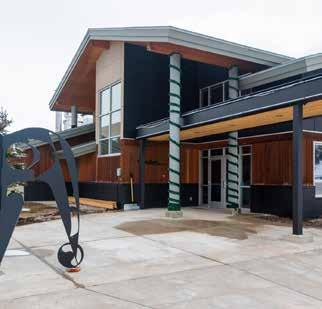

The winter season, which ran from Dec. 28 through March 25 and coincided with the anniversary date, featured 10 professional productions at the WMPAC. Each show brought a unique type of performance to the stage, including a bluegrass mandolin artist, a Memphis dance troupe, a live show by NPR podcast hosts and a Czech girls choir, to name a few.
Zirkle, who has been a part of WMPAC since 2011, strategically builds the programming to cover a wide swath of performances. The diversity that this approach fosters has since become a key aspect of the theater’s identity.
“We came out of the game identifying primarily as an arts center as opposed to a symphony or a ballet company or a theater company that only does one thing,” Zirkle said. “In order to serve everybody, there cannot be a single show that’s for everybody.”
In bringing such a variety of shows to Big Sky, the WMPAC is able to expose the community to new types of art right in their backyard. Zirkle admitted that not everyone will enjoy every show, however, by bringing in specialized acts, he believes that anyone could find at least one WMPAC performance that speaks to them.
“The night of a show, you feel the vibe of the audience, and people don't necessarily know what to expect, or they aren’t expecting anything,” said Cara Wilder, WMPAC’s director of operations and marketing. “Then, at the end of the night, [the audience is] transformed into this very positive group of people that are really happy that they showed up. And that's really gratifying to me.”

As the community has grown, WMPAC has put focus toward calibrating its offerings to the changing town. Big Sky looked different 10 years ago, but the WMPAC’s structure has remained largely the same. The small theater was packed for every performance this winter, according to Zirkle.
“It was the best year ever,” Zirkle said. “There's gravity toward, well, if we're getting older, we should be getting bigger. For us, it's about getting better, and then making sure that we were programming the right amount of acts, the right variety and making sure that there's access to the entire community.”
Although a dynamic display of professional talent was presented across the 10 winter shows, community theater and youth productions bookended the programming in what Zirkle and Wilder agreed was a natural extension of the anniversary season.
A performing arts center was always part of the plan when Friends of Big Sky Education began work toward building a high school in Big Sky, Zirkle told EBS in a 2022 interview looking back on the WMPAC’s history. The theater was initially slated to be a school theater, however, when the 2008 recession hit, FOBSE tabled the theater project before deciding that a dual-purpose facility would be a more sustainable route. Thus, WMPAC was born as a venue for professional, community and school productions alike.
Participation in theater programs through Lone Peak High School, Big Sky Broadway and the Big Sky Community Theater have been on the rise over the past few years. LPHS has historically put on a single musical during the school year, but added a second to the playbill for 2022/23. Students presented an “Elf” Christmas special in December and “Cinderella” in early April at the WMPAC. The high school plays have so much interest, they are almost entirely double cast.
The community theater—which Zirkle said is in the early stages of preparing a 2023 production— involved dozens of locals for a fall rendition of the 1980s cult classic film “Clue.” Youth plays with Big Sky Broadway bring casts with upward of 30 kids to the WMPAC stage for multiple shows each summer.
Despite a growing interest in the performing arts in Big Sky, WMPAC has faced its fair share of challenges since 2013.
“Within just 10 years, there was a world-changing event that we actually survived that a lot of theaters across the country did not survive,” Wilder explained. “The live performing arts were probably one of the biggest industries hit hard by the pandemic.”
While WMPAC was successful in filling seats in its 10th year, the COVID-19 pandemic forced Zirkle to get creative with finding ways to bring art to Big Sky without inviting anyone into the actual facility. Between performances hosted over Zoom and outdoor concerts, the theater adapted to an unstable and ever-changing landscape successfully. With things largely back to normal, Zirkle said that the 2022/23 season topped the books for WMPAC’s most successful season, outdoing the previous year’s record-breaking numbers.
As the theater moves out of its infancy, Zirkle emphasized the importance of bringing art to where people already are, a skill he honed during the pandemic. The next few months of programming include collaborative efforts to bring mini plays at Big Sky’s weekly farmers markets, and a comedy workshop and performance series.
WMPAC has also partnered with Missoula’s Montana Repertory Theatre to commission an indigenous playwright to write a play about focusing on missing and endangered indigenous women in the region. Zirkle said the project has been in the works for years, but an early version of the play will be workshopped at the WMPAC during the summer before it eventually tours across the state with MRT.
The WMPAC’s exterior facade received a birthday makeover this winter to help solidify its visual identity. Black paint now coats the theater’s exterior walls, there’s now a small entrance canopy and lighting was installed to frame the building during evening shows.

Visitors might also notice minor interior alterations to the WMPAC’s reception space in upcoming months. It doubles as the school cafeteria, and increased enrollment in the school district necessitates a bigger lunchroom.
As the WMPAC moves beyond the 10-year milestone, Zirkle said the theater will continue bringing diverse acts to Big Sky during the winter while experimenting with new ways to engage with locals during the spring and fall shoulder seasons.
“We're 10 years old,” Zirkle said. “We're in fifth grade, right? We're not even teenagers.”
LOCAL Explore Big Sky 9 April 20 - May 3, 2023
Black exterior and signage complete additions to the WMPAC's updated exterior. PHOTO BY JULIA BARTON
TAIKOPROJECT, a unique Japanese-inspired drumming group, was one of the performances that made up the WMPAC’s winter season.
PHOTO BY TORI PINTAR
Audience members smile during a performance inside the WMPAC.
PHOTO BY TORI PINTAR
The WMPAC received an exterior birthday makeover during the winter, creating a more obvious entrance for visitors and helping to differentiate the space from the school with which it shares a building.
PHOTO BY JULIA BARTON
HOUSING: RENT LOCAL SURGES PAST 100 UNITS, 250 TENANTS
HOUSING PROGRAM TARGETS VACATION RENTALS, VACANT PROPERTIES
BY JACK REANEY
BIG SKY—It’s not a permanent fix, but it’s making a difference right now.
The Big Sky Community Housing Trust works to increase Big Sky’s workforce housing stock through various strategies including the permanent Good Deeds program and construction partnerships responsible for the RiverView and Powder Light apartments, and MeadowView condominiums. As a short-term solution, the Rent Local program pays property owners willing to rent to Big Sky workers—cash bonuses are calculated on length of a new lease and the number of bedrooms.
After 20 months, the program is now partnered with more than 100 owners and provides a bed for roughly 250 members of the local workforce. Rent Local faces a surplus of interest from both renters and tenants, according to BSCHT Program Director Becky Brockie, who spoke with Explore Big Sky.
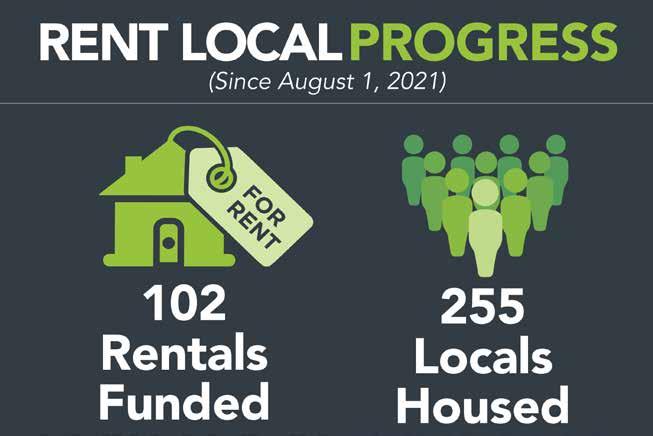
“There is no [rental] inventory right now,” Brockie said. “This [program] increases inventory and helps small businesses stay in business, secure hires and provide housing for employees.”
The housing trust reports that since 2018, Big Sky’s long-term vacancy rate has fallen from 1% to 0%—even further below a healthy vacancy rate of 3%—as the post-pandemic visitation surge made short-term rentals more profitable. To ease some pressure, Rent Local began targeting vacation rentals and properties that sit empty for most of the year.
Brockie said it’s a borrowed idea. At first, BSCHT partnered with a company called Landing Locals out of Truckee, Calif., a zerobudget program that depended on altruism. Eventually, Landing Locals became funded by the Truckee government.
In August 2021, the housing trust launched a Big Sky spinoff, Rent Local, funded by Resort Tax and the Spanish Peaks, Moonlight and Yellowstone Club Community Foundations.
The initial goal was 100 properties, but Brockie said the housing trust didn’t know what to expect.
“It was just a hope and a dream that it would make some sort of difference until we could build something more permanent,” she said, adding that the biggest drawback is the program’s lack of permanency.
“We pay owners for a year or two, and that’s it,” she said. “But we feel until Big Sky comes off that 0% vacancy rate… We feel like we still need the program. Without it, we’d have nothing to offer anybody who called us today.”
Even with more than 100 Rent Local units, Brockie said the housing trust often faces overwhelming interest from tenants.
“The last very affordable property we had in our Rent Local program, I shut the applications down once we had 12, and they would have kept coming in… I have no idea how many applicants there would have ended up being,” Brockie said. In the first 12 applicants, she saw that plenty were qualified. There’s plenty of property owners interested, too.
In February, the program adjusted its minimum commitment from six months to one year. Some of the program’s early tenants were banking on a lease renewal after six months that never came, Brockie explained. The housing trust decided to rule out property owners who weren’t willing to commit to the full year.
“The last thing we want to do is displace locals, so we [now] require a one-year commitment,” Brockie said.
With more property owners interested than the housing trust can afford to pay, eligible owners are selected through a lottery system.
The housing trust focuses 65% of its Rent Local budget on adding vacant or vacation properties to the long-term market. Only 35% of the budget goes to renters already renting long-term.
"If we could give an incentive to every property owner in Big Sky renting long-term to locals, we would. But we can’t afford to do that… We don’t intend to disappoint or insult people who have been renting long-term for years."
Brockie believes that anecdotally, renters are leaving the short-term market for a few reasons. Reservations have declined since the post-COVID peak, and property management fees have increased, she suggested.
“There’s people looking for a little more stability. We can provide that.”
A statewide model
The idea to incentivize long-term rentals is not limited to Big Sky—Rep. Jane Gillette sponsored House Bill 430 and told the Bozeman Daily Chronicle it was based on Rent Local. The bill proposed to tax shortterm rentals 25 cents per hundred dollars, generating revenue to enable a tax rebate for homeowners willing to rent long-term.
HB 430 enjoyed early success but didn’t go far in the legislature.
“It was highly supported when it went through its first committee,” Brockie said. “It had no opponents, and all sorts of organizations came out and spoke up for it. I think we were pretty hopeful it might go somewhere because of that, [but] why it didn’t, I don’t know.”
The Montana Free Press capitol tracker lists HB 430 as “probably dead” after missing the April 6 deadline for a House vote. It passed out of the two-thirds-Republican House Taxation Committee on March 28, but was tabled unanimously in the House Appropriations Committee.
Brockie said it was exciting to see Big Sky in a state-level dialogue, “but more importantly [in discussion] about housing issues that affect all of Montana.”
Explore Big Sky 10 April 20 - May 3, 2023 LOCAL
Rent Local’s impact as of mid-April 2023. COURTESY OF BSCHT
BIG SKY’S
TICKETS & INFO AT BIGSKYPBR.COM
COMMUNITY EVENTS

FRIDAY, JULY 14
BIG SKY COMMUNITY RODEO
7:00 PM - Big Sky Events Arena
COMMUNITY STREET DANCE
Featuring The Tony Marques Band
9:00 PM - Len Hill Park
TUESDAY, JULY 18
FREE COMMUNITY DAY / FAMILY ACTIVITIES
12:00 PM - Big Sky Events Arena
MUTTON BUSTIN’
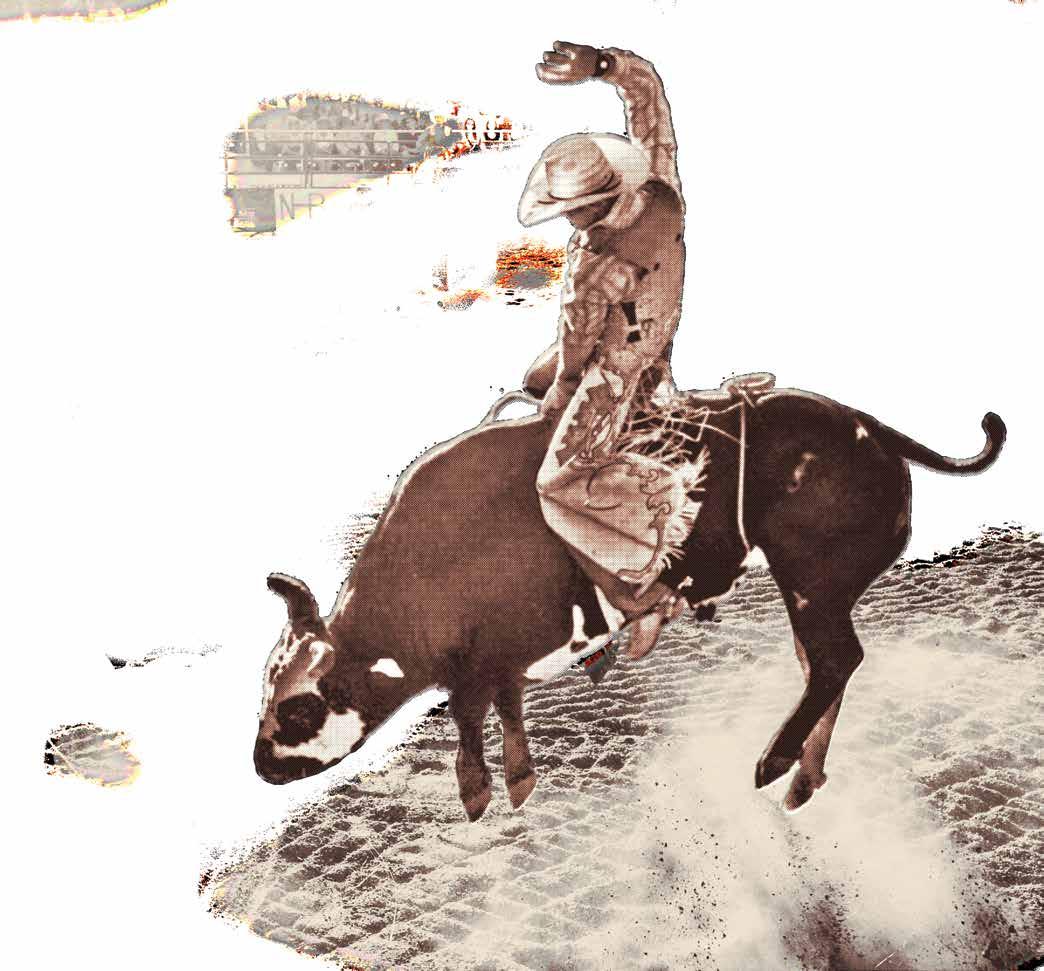
4:00 PM - Big Sky Events Arena
DICK ALLGOOD COMMUNITY BINGO NIGHT
6:00 PM - Big Sky Events Arena
WEDNESDAY, JULY 19
BIG SKY PBR GOLF TOURNAMENT
9:00 AM - Black Bull Golf Course, Bozeman, MT
PROFESSIONAL BULL RIDING
THURSDAY, JULY 20
BULL RIDING NIGHT 1
6:00 PM - Big Sky Events Arena
MUSIC IN THE MOUNTAINS CONCERT
Featuring Madeline Hawthorne
8:00 PM - Len Hill Park
FRIDAY, JULY 21
BULL RIDING NIGHT 2
7:00 PM - Big Sky Events Arena
PBR AFTER PARTY
Featuring Jamie McLean Band
9:15 PM - SAV Big Sky Events Arena Stage
SATURDAY, JULY 22
BULL RIDING NIGHT 3
7:00 PM - Big Sky Events Arena
PBR AFTER PARTY
Featuring Lukas Nelson & POTR
9:15 PM - SAV Big Sky Events Arena Stage





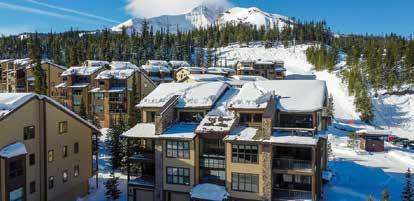

WELL BEYOND YOUR HOMETOWN HEALTHCARE. At Big Sky Medical Center, we’re here for all your health needs. Emergency Department 24/7/365 From primary care and pharmacy needs to imaging and emergency care, we’re here to help give you comfort and peace of mind. Making sure you feel confident in your health and well-being. Providing care that goes well beyond. Explore more at BigSkyMedicalCenter.org ©2023 BHH Affiliates, LLC. An independently owned and operated franchisee of BHH Affiliates, LLC. Berkshire Hathaway HomeServices and the Berkshire Hathaway HomeServices symbol are registered service marks of Columbia Insurance Company, a Berkshire Hathaway affiliate. Equal Housing Opportunity. BHHSMT.COM | 406.995.4060 | 55 LONE PEAK DRIVE, STE. 3 | BIG SKY TOWN CENTER #1 in MT 6 SIOUX CASCADE SUBDIVISION 3,559± SF | 5 BD + 4 BA | $2,770,000 DON PILOTTE 406.580.0155 155 AURORA LIGHTS DRIVE, UNIT #B-10 FIRELIGHT MEADOWS CONDO 1,092± SF | 2 BD + 2 BA | $829,900 JAMIE ROBERTS 406.209.3069 For Life From first homes to forever homes, we’re here. Today. Tomorrow. For You. 137 BEAVERHEAD DRIVE, UNIT #302 BEAVERHEAD CONDO 2,070± SF | 3 BD + 3 BA | $2,379,000 JAMIE ROBERTS 406.209.3069 60 BIG SKY RESORT ROAD, UNIT #10511 SUMMIT HOTEL CONDO 855± SF | 1 BD + 2 BA | $799,000 KATIE MORRISON 406.570.0096
‘NEEDS, NOT WANTS’ DISCUSSED AT WATER AND SEWER MEETING
BY JACK REANEY
BIG SKY—A ‘win-win’ agreement could enable both the Little Coyote Pond restoration project and the construction of a million-gallon tank to store community water, a topic of primary discussion at the Big Sky County Water and Sewer District’s monthly board meeting on April 18.

Other topics included the district’s ongoing talent search to eventually replace General Manager Ron Edwards upon retirement, a review of the March 29 Flatiron subcommittee meeting, the announcement of a significant reduction to Big Sky property taxes and a presentation by Gallatin River Task Force.
For the Big Sky Owners Association to move forward with its pond restoration project— restoring the West Fork of the Gallatin River and establishing a fishery and community recreation area—the organization must obtain water rights from the water and sewer district. The district proposed that in exchange for those water rights, BSOA confirms an easement on Crazy Horse Road so the district can build a milliongallon storage tank on vacant land which the district is working to acquire from NorthWestern Energy.
The district’s proposal also included language stating that the water tank may require up to two acres of land and a property line adjustment. The BSOA rejected the proposal on March 31.
As a preface to the April 18 board discussion, board member Dick Fast recounted recent communications, which included BSOA’s intent to terminate negotiations. Fast concluded that the board intends “to determine if there is some way forward that will benefit BSOA, the Big Sky Water and Sewer District, and the community of Big Sky as a whole.”
BSOA board chair George Mueller joined the meeting virtually. He said BSOA’s board sees a simple solution: reverting to an eight-year-old memorandum of understanding which both parties signed before BSCWSD had interest in building a water tank. He also said that the BSOA board perceives the water and sewer district as “trying to interject new and additional terms such as, for example, wanting us to give you two acres of land,” which were not contemplated in the original MOU.
“My view as chairman of BSOA is, we need to get our pond project started. We have maybe a month to sign our final contract if we’re going to get work done this year,” Mueller said.
Wheeler opened board discussion, and Mueller interjected that the process of passing drafts and emails back and forth has not been successful. He suggested a small group meeting between both parties to talk it through and “iron it out at the table.”
“We agree that you need a new water tank and are not intending to stand in the way of that happening,” Mueller said.
His assumption, he added, was that the district would dismantle the existing 250,000-gallon water tank near the new tank’s proposed site, to which district board chair Brian Wheeler responded hesitantly—water storage, Wheeler said, is “one of the most important assets we all have in Big Sky.”
Mueller and the district board agreed to meet during the first week of May. They did not pick an exact date during the April 18 meeting.
“I just want to be clear on the ask. We’re requesting two items,” Wheeler said. “They’re needs, not wants… They benefit all BSOA members, the entire Big Sky community regarding public health and safety. This is a one-million-gallon tank that’s gonna be sitting up in a topographic location that’s ideal for gravity feed—in a catastrophic fire or power loss or anything like that.”
Wheeler clarified that the district’s .23-acre parcel from NorthWestern Energy would be nearly enough land for the tank itself, and only a temporary easement might be necessary for space during construction. The
board agreed that the project would likely not require ‘up to two acres’ as stated in the initial proposal.
“I think this would be a great opportunity to celebrate two great projects in the community, and that’s in collaboration with the BSOA. It’s a win. Let’s celebrate the win, let’s not get into a logjam,” Wheeler said.
District Water Superintendent Jim Muscat called the upgrade a “no-brainer.”
“It’s real obvious that Big Sky has grown, that’s the same tank [from 1970],” Muscat said. “We need to upsize that tank to match the growth of the area.”
Tax relief for Big Sky property owners
For two decades, Big Sky homeowners have paid property taxes for water and sewer facilities.

Effective 2023, the hefty sewer portion of the BSCWSD tax will disappear as debt for the current— soon to be retired—sewage treatment plant has been completely paid, according to district Finance Officer Terry Smith. The outgoing plant was built in 2002 and funded in part by Resort Tax, but mostly through property tax.
“Our last payment of $867,411 will be paid on July 1, 2023,” Smith told EBS.
In 2022, the district collected $1.35 million in combined water and sewer tax. In 2023, the district will collect only $324,000—a $1.1 million tax reduction, roughly four-fold.
“I think our property owners will be quite happy to see their tax bill this year,” Smith said during Tuesday’s meeting.
“Our mill rate is going down significantly,” Edwards added. “This is kind of a benchmark for us.”
BSCWSD’s mill rate is dropping from approximately 36% to 9%.
Goal to reduce water use by 20%
During the meeting, leaders from the Gallatin River Task Force presented on the value of water conservation.
Through water-wise programs including rebates and incentives, the Task Force has saved an estimated 9.28 million gallons of water and engaged 151 participants.
“[That’s something] we are pretty proud of, but that being said it’s a pretty small percentage of the Big Sky community… It’s only about 5%,” said Conservation Manager Jessica Olsen.
By the end of June, the Task Force plans to launch a “drought dashboard” website to inform the public of current drought status, trends and timely recommendations.
Olsen said irrigation is the number one water use in Big Sky, and that the Task Force hopes to gain support from the district to reduce it. In the past year, the Task Force began offering rebates for water-wise landscaping, turf conversion and upgrades to efficient irrigation systems, in addition to rebates for waterefficient indoor fixtures.
“I think what a lot of people think is, if you’re doing a water-wise landscape you’re going to get some desertlooking landscape, which is not really the case,” said Chief Operating Officer Emily O’Connor, adding that the Task Force plans to plant demonstration gardens to showcase water-wise landscaping. “You can get the look you want and still save a ton [of water].”
Olsen said that through education and partnerships— including a website with workshops and classes on water-wise landscaping—the Task Force has a goal to reduce community water use by 20%.
“We also just want to commend the water and sewer district for efforts you’ve taken. We see you as a leader in water conservation in this community as the largest water provider,” Olsen said.
She later added that the Task Force will require support from BSCWSD as a water provider in order to be eligible for certain grants in the upcoming fiscal year.
Explore Big Sky 13 April 20 - May 3, 2023 LOCAL
The proposed tank at the end of Crazy Horse Road would be hidden from view, district officials say. SCREENSHOT FROM GOOGLE MAPS
The Big Sky County Water and Sewer District is looking to increase water storage on Crazy Horse Road by building a larger tank than this existing one, built in 1970. PHOTO BY JACK REANEY
REGIONAL
COMPETING BILLS, OPINIONS COULD DETERMINE REALLOCATION OF MONTANA’S MARIJUANA TAX REVENUE
BY BLAIR MILLER DAILY MONTANAN
Fights are ramping up at the state Capitol over what to do with Montana’s marijuana tax revenue and its funding of the Habitat Montana conservation program, as the two bills still moving through the legislature that address both contain vastly different end goals.
Conservation and outdoors groups have been loudly outspoken about what they see as efforts to redistribute more than $8 million a year in marijuana tax revenue currently allocated to Habitat Montana, showing up en masse to committee hearings to oppose several bills and holding a rally attended by hundreds at the Capitol in late February at which they called on lawmakers to keep their hands off the extra funding for the program.
Several of the groups opposed to shifting the funding away from Habitat Montana said this week they had seen a positive resolution when Senate Bill 442, sponsored by Sen. Mike Lang, R-Malta, which had sought to redistribute money going toward Habitat Montana and other programs to county road funding, was amended to restore the 20% of marijuana tax revenue currently going to the program on an ongoing basis – but through a slightly different mechanism.
Wild Montana State Policy Director Noah Marion said in a statement Thursday the amendment was “great news” for conservation and public land access and urged lawmakers “to push this bill over the line without delay.”

But another bill, House Bill 669 from Rep. Bill Mercer, R-Billings, could get in the way of that happening. It contains one-time funding for
Habitat Montana and other programs currently receiving marijuana revenue only through the next biennium.
After the end of FY2025, all marijuana tax revenue—save for 6% allocated to the Healing and Ending Addiction Through Recovery and Treatment (HEART) fund—would go to the general fund, and lawmakers would decide where and how it should be spent starting in the next legislative session.
The reason for that has also split Mercer and fellow Republican lawmakers with Democrats and conservation groups, who see a key difference in how the allocation of the marijuana tax revenue was split up in the first place during the 2021 legislative session through House Bill 701.
As he told the House Appropriations Committee during the bill’s initial hearing, during executive action earlier this week, and again when the bill was heard on second reading on the House floor Friday, Mercer believes that I-190, the initiative that voters passed to legalize adult-use marijuana, appropriated the tax revenue and how it would be spent.
Mercer and fellow Republicans said several times during committee and floor discussions that it is the sole responsibility of the legislature under the Montana Constitution to appropriate money, and since they claim it was the initiative that outlined how the money should be spent, the current distribution takes the power of the purse out of the hands of lawmakers.
“The initiative was a very interesting approach to try to say to people, ‘If you vote for this, all these dollars will do these various things,’ which is not permissible under the initiative process,” Mercer
told the Appropriations Committee earlier this week. “… The idea that we somehow have our hands tied behind our back and can’t decide how to use revenue is absolutely impermissible, and we shouldn’t allow it to continue.”
Rep. David Bedey, R-Hamilton, said allowing initiatives to appropriate money would lead to a “descent into chaos” and would lead to initiatives running public relations campaigns to do so. Democrats on the floor Friday said the idea that constituents had appropriated money was flat out wrong.
Rep. Emma Kerr-Carpenter, D-Billings, noted that during the extensive work on the marijuana framework bill, HB701, lawmakers made changes to the revenue allocations that differed from what had been set as a framework in the initiative.
“I will say that many of us voted for those changes because we felt like it was our responsibility. … We changed the revenue allocations, just like this bill would,” she said. “However, I don’t think we need to relitigate 701. We passed the legislation last session; why are we voting on this bill?”
House Minority Leader Kim Abbott, D-Helena, said the initiative “absolutely did not” appropriate money but legalized adult-use marijuana and sent the money to the special revenue account to be distributed how lawmakers wished. Further, she said, the budget office and Department of Justice said the expenditures were subject to legislative appropriation.
“Certainly, the voters had an opinion about how we should be spending, but we don’t have follow those opinions,” she said. “But just because we don’t have to doesn’t mean we shouldn’t listen.”
Explore Big Sky 14 April 20 - May 3, 20233
Hundreds of conservation and public land supporters rallied at the Capitol in Helena to oppose bills that would strip marijuana tax revenue away from the Habitat Montana program on Feb. 23, 2023.
PHOTO BY BLAIR MILLER / DAILY MONTANAN
The $353 million in marijuana sales in the 14 months since recreational products came to market have brought in $53.8 million in tax revenue, according to the Cannabis Control Division. In a fiscal note attached to Mercer’s bill, the Governor’s Office of Budget and Program Planning forecasts medical and adult-use sales will bring in between $52.9 million and $57.9 million in tax revenue annually over the next four years.
Under Mercer’s bill, the first $5.2 million would go toward Department of Revenue administrative costs, then continue to send $6 million to the HEART fund, as is the case under current law.
But instead of distributing out money to various funds from there—20% for the Habitat Montana program; 4% to a state park account; 4% to a trails and recreational facility account; 4% to a nongame wildlife account; 3% or $200,000 to a veterans and surviving spouses revenue account; $150,000 to fund crisis intervention team training; and the rest to the general fund— Mercer’s bill would send all the money going to those accounts to the general fund starting in FY2026, to the tune of $41 million to $46 million per year.
The general fund under current law would receive about $30 million and $31 million in FY2026 and FY2027.
The bill was amended this week in Appropriations to make one-time appropriations for the biennium of $8.7 million to the Habitat Montana program; $1.75 million to the state park account; $1.75 million to the trails and recreational facilities account; $1.75 million to

the nongame wildlife account; $2.5 million for conservation districts; and $2.5 million for the veterans and surviving spouses revenue account. Mercer said the amendment still made the conservation and recreation programs whole over the next biennium, but said it should be up to future legislatures to determine how to move forward with the money starting with the 2025 session.
Rep. John Fitzpatrick, R-Anaconda, provided an example of what the next legislature might seek to do with the marijuana tax revenue when all the money is in the general fund.
“We have a drug calamity on our hands,” he said. “In 2025, we’re going to need a small fortune to fund drug treatment and law enforcement.”
Reps. Ed Buttrey, R-Great Falls, Paul Green, R-Hardin, and Mike Hopkins, R-Missoula, joined all 32 House Democrats in voting against the bill on its second reading, in a 65-35 vote. It will face a third reading before being sent over to the Senate.
Lang said he had not yet seen Mercer’s bill, or another bill from Republican Rep. Marta Bertoglio which was tabled in favor of Mercer’s, but said the Senate would be “addressing those as we go down the road.”
His bill puts 11% of the marijuana tax revenue to the HEART fund; 20% to a fund to construct and maintain county roads; 5% to the veterans and surviving spouses revenue account; 12% total to the state parks, trails and facilities, and nongame accounts; and 20% to a new “habitat legacy account.”
That new habitat legacy account would send 75% of its funds to the Habitat Montana program, and if the unobligated fund balance goes above $50 million, it would return the excess to the legacy account to be disbursed to Habitat Montana ongoing projects as well as other wildlife habitat improvement and stewardship projects.
Habitat Montana’s main source of funding is licenses bought by out-of-state hunters, which an FWP official said earlier this session brings in around $12 million each biennium. Under current law, the marijuana tax revenue would put another $8.3 million to $9.3 million toward the program each of the next four years.
Lang told the Daily Montanan he wants the tax revenue to go toward county roads because they tie in with much of the access to public lands in more rural parts of the state that don’t have the money needed to build and maintain roads.
His bill is scheduled for its second reading on the Senate floor on in early April, ahead of the transmittal deadline for revenue bills.
He said he hoped his bill would be supported by the agricultural and conservation industries, some of which hinted this week they were pleased with the new amended version, over any other revenue redistribution bills that have been brought this session.
“I want [agriculture] to get together on this thing; quit shooting each other,” he said.
This article is republished from the Daily Montanan under a Creative Commons license.
Explore Big Sky 15 April 20 - May 3, 2023
REGIONAL Premier Wilderness Rafting Trips boundaryexpeditions.com NOW BOOKING FOR JUNE 2023 to DisconnectReconnect Middle Fork of the Salmon River, Idaho
WEST YELLOWSTONE’S SEWER PLANT OVERWORKED BY TOURISTS, STIFLING GROWTH
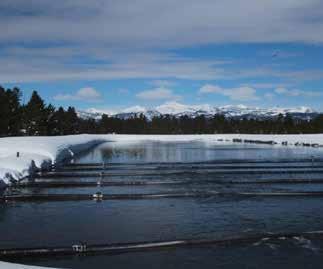 BY VICTORIA EAVIS MONTANA FREE PRESS
BY VICTORIA EAVIS MONTANA FREE PRESS
WEST YELLOWSTONE — When a town has twice as many hotel rooms as residents, it can run into a unique set of issues.
West Yellowstone, currently hidden under multiple feet of snow in southern Montana on the border of Yellowstone National Park, is fueled by the millions of tourists who come from all over the world each year to visit the park.
While the heavy flow of tourism keeps the town afloat, it’s a double-edged sword. The small town demands bigtown infrastructure, but its wastewater treatment plant is often overworked and overloaded, an issue that has seeped into multiple corners of the town and added to its housing woes.
In the off-season — roughly October to May — West Yellowstone is home to about 1,200 people. That number surges to 5,000 in the summer, when as many as 10,000 visitors pass through in a day, according to Peggy Russell, the town’s finance clerk.
And those thousands of people need to go to the bathroom.
During peak park visitation days, the town’s main pump station, which handles most of that sewage, can receive a million gallons a day — more than twice the amount it pumps during the winter.
In early April, when the park was closed, the pump station handled only about 280,000 gallons daily, town deputy superintendent Jon Brown said.
“The treatment plant has to be designed for the tourist season,” said the town’s consulting engineer, Dave Noel. “The rest of the year it’s running great. It’s the tourist season we really have to worry about.”
Asked if he’s worried the town will exceed permitted levels of nitrogen discharge this coming summer, potentially contaminating the underground aquifer, Noel said, “Oh, absolutely. Yes.”
“We’re not allowing that to happen,” Brown said.
The town has “sometimes” exceeded the nitrogen limits put in place by the Montana Department of Environmental Quality, but not enough to be harmful, Noel said.
To fix the problem, the town plans to transition from a lagoon system — which consists of pools northwest of town that treat wastewater — to a mechanical plant more common in Montana’s bigger towns.
In order to accommodate the overtaxed wastewater system, the town council last year imposed a sewer hookup moratorium, which in practice means nearly no new buildings can be constructed.
And with no significant amount of new housing being built, the town is struggling to hire vital workers, town manager Dan Walker explained. West Yellowstone has a “serious” teacher shortage, needs more public works positions filled, and has had two 911-dispatcher positions open for over a year, he added.
People could, in theory, live in nearby towns, but that has issues of its own.
“You can’t make $23 an hour and live an hour away,” Walker said.
Residents who do live in town are also feeling the effects of a wastewater system that’s working overtime. Residents’ sewer bills have increased from $15 in 2016 to what will be $30.32 in July of this year, Russell said.
It’s been clear for a few years that the sewage system was reaching the limits of its capacity, and the pandemic made the problem even more acute.
Yellowstone National Park hit record visitation numbers in 2021 with close to five million people, as tourists embraced more interstate travel and outdoor recreation following lockdowns. The west entrance to the park, which is located in West Yellowstone, is typically the most popular entrance for visitors.
So not only were more people than ever visiting the park, more people than ever were using the toilets in West Yellowstone.
“I think [the pandemic] exacerbated it,” Walker said. In the town’s pursuit to upgrade the treatment plant, it’s having to navigate a real estate roadblock.
Before the town can start construction on the new plant — estimated by Noel’s engineering firm to come with a $33 million price tag — it needs to renegotiate a lease with the Montana Department of Transportation.
The current wastewater treatment plant, where the new plant will also be sited, is on Yellowstone Airport property owned by the state. According to Walker and West Yellowstone Mayor Travis Watt, the current lease contains a clause that allows the state to terminate that lease agreement if the airport needs the land.
Because the lease stipulates that the land can be taken back at any point, city officials explained, they worry that West Yellowstone will struggle to fund the pricey project.
“The termination clause is what’s killing us, because nobody is going to loan the town of West Yellowstone $33 million with a termination clause [in the lease],” Watt said.
His frustration is evident.
“To be honest, it’s been stupid. We’re so ticked off about it,” Watt added.
But according to Walker and Montana Department of Transportation attorney Valerie Wilson, after years of negotiations the two sides are within days of finalizing a new lease agreement. Wilson said the new lease will have a less onerous termination clause.
Housing help on the way?
Between the building moratorium and the sewage treatment lease negotiations, the town’s officials are counting on the passage of House Bill 430 in the Montana Legislature.
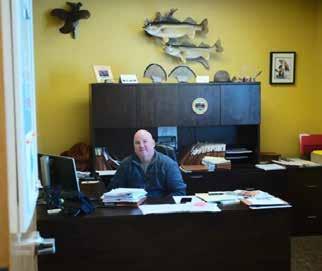
The legislation, sponsored by Rep. Jane Gillette, R-Bozeman, who represents West Yellowstone, would allow local governments to increase taxes on short-term rentals by 0.25%, with the revenue funding programs that pay landlords to rent their units long-term.
If successful, the law would, in theory, create more housing available to local residents without increasing sewer hook-ups with new construction.
In 2016, the town purchased 80 acres on the edge of downtown to develop more housing. Now, the land sits empty, awaiting increased sewer capacity.
“Until they decide what they’re going to build on the 80 acres, there’s not many places to build anyway,” said Shaun Junglen, a construction worker who was taking his lunch break at the Buffalo Bar.
Junglen, who lives in nearby Island Park, Idaho, was working on a remodel in West Yellowstone that already has sewer hook-ups.
West Yellowstone isn’t the only tourism-fueled town in the region facing sewer issues.
Just over the Idaho border, Island Park is moving away from a lagoon-based system to a mechanical plant because of its own population swings in the summer months.
The winter months see roughly 30,000 to 40,000 gallons of sewer water on a daily basis, according to Noel, who is also working with Island Park. That volume climbs to 450,000 to 500,000 gallons in the summer, a more than 1,000% increase.
Back in West Yellowstone, as lease negotiations continue, tens of millions of dollars need to be found to build the new plant, the sewer hook-up moratorium remains, and summer is fast approach without an immediate solution in sight.
“I just sort of feel helpless,” Walker said. “I don’t know what to do.”
Explore Big Sky 16 April 20 - May 3, 20233 REGIONAL
This article is republished from the Montana Free Press under a Creative Commons license.
THE GATEWAY TOWN NEAR YELLOWSTONE NATIONAL PARK HAS A MORATORIUM ON MOST NEW CONSTRUCTION UNTIL IT CAN BUILD A NEW $33 MILLION WASTEWATER TREATMENT PLANT.
The town of West Yellowstone plans to replace its current “lagoon system” sewage plant with a more sophisticated mechanical plant like those used by bigger cities. PHOTO BY VICTORIA EASVIS / MTFP
Dan Walker, West Yellowstone’s town manager, says that with a building moratorium in place, the town is struggling to hire workers who need a place to live. PHOTO BY VICTORIA EAVIS / MTFP
WOLF KILLING AND THE CONSEQUENCES OF DISTURBING PACK DYNAMICS
NEW RESEARCH SHOWS KILLING WOLVES CHANGES PACK DYNAMICS, AND THOSE CHANGES MATTER.
BY CHRISTINE PETERSON WYOFILE
The last few years have been tough for gray wolves. Idaho passed a law to kill up to 90% of the state’s wolves. Montana killed 270 in one season. Wisconsin killed about 220 before the species went back on the Endangered Species List. Some 25 wolves killed in the Yellowstone National Park area in 2022 came from the park itself.
Proponents of the cull say too many wolves are on the landscape, and even removing large portions of packs won’t make much impact on overall populations. Short of the mass annihilation of a century ago, they’ll bounce back. They’ll be fine.
But a large study published earlier this year looking at wolves within five national parks across Canada and the U.S. shows that while wolf populations may recover quickly, their social structures don’t. And, the authors argue, the way wolves function on a landscape—how breeding pairs order their packs, how and when they choose to reproduce, for example—is an important part of our natural systems. So the mortality of a single animal could have significant implications.
“You kill the wrong wolf at the wrong time, that pack could blink out or won’t reproduce,” said Doug Smith, recently retired wolf biologist with Yellowstone National Park who co-authored the paper. “Their social dynamics are fragile. We made no value judgment on killing wolves. We’re just saying this is 100% what happens if you do.”
In Wyoming outside of the national parks, where wolves have been managed by the state for the better part of a decade, biologists say they’ve found a way to allow wolf hunting, keep livestock depredations in check and preserve stable pack structures. It’s possible with enough data and attention to wolf management, said Ken Mills, Wyoming Game and Fish’s wolf biologist.
Why packs matter
Understanding what happens when wolves die requires first knowing how wolf packs function. “Because wolves are social and populations are built on packs, you won’t have a collection of individual wolves. That’s elk and deer,” Smith said. “Wolf packs don’t exist as individuals, they exist as groups in packs.”
Each pack has, in general, three age classes: The breeding pair and their offspring, which are nonbreeding adults and pups. Depending on the size of a pack, there could be three to five non-breeding adults. If one of the breeding wolves dies, another one of the adults could step up to breed unless they’re related, in which case a wolf from outside moves in, Smith said.
Some packs will be as small as four or five individuals, others like Yellowstone’s Junction Butte Pack can be as large as 20—though Smith said that’s uncommon. The average Yellowstone pack size hovers around 10 individuals.
Packs then claim certain territories, and they don’t take those claims lightly.
The biggest killer of wolves is wolves, largely in territorial disputes, said Kira Cassidy, lead author on the new paper and research associate with Yellowstone Wolf Project. Most packs tend to stick to their ranges unless another pack dissolves or becomes particularly vulnerable, usually due to the loss of adults.
Packs naturally break up and re-form even without human-caused mortalities from hunting, car collisions, trapping or poaching. About eight to 10 packs typically occupy Yellowstone, though on average, Cassidy said one dissolves and another forms each year.
When a pack does dissolve, remaining members typically strike out on their own initially.
“There’s usually only a handful [of individuals] left,” Cassidy said. “They become dispersers or lone wolves by default.”
Rarely they may join an established pack—Yellowstone biologists have only recorded an unrelated adult joining an established pack as a subordinate a couple dozen times in the last 28 years. If they’re lucky, these lone animals pair up and find a niche territory they can claim as their own. But more often than not, they’re dead within a year.
Dispersing wolves are more likely to run into humans while seeking food, or they die trying to scavenge another pack’s kill.
“They’re exposed to a lot of mortality out there, much more than just the short time the hunting quota is open,” Cassidy said.
Delicate systems
In the winter of 2021, politics in Montana changed. Lawmakers decided to lift wolf quotas around Yellowstone, opening the area bordering the park to a free-for-all. In Idaho, meanwhile, lawmakers passed a bill allowing year-round wolf trapping on private property, unlimited purchase of wolf tags and any method of take for any wild canines. Wolf killing began in earnest.
Wolves from packs in Yellowstone strayed from the park into Montana and were shot.
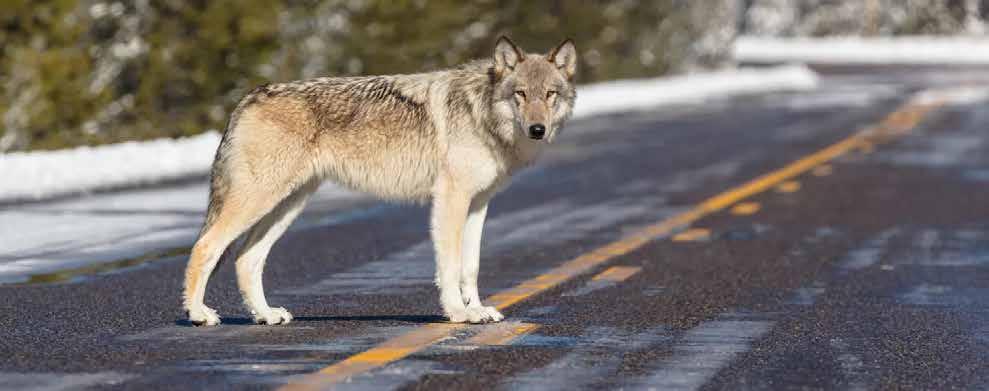
As Cassidy watched this unprecedented killing of park wolves, she said, she began to realize this was a chance to determine how packs respond not only to losing individuals, but if it mattered which individuals were killed.
Not long after the park wolves were killed, Cassidy— who came to Yellowstone National Park 16 years ago to study wolves, predominantly their social structures— started noticing differences. Packs like the Junction Butte Pack lost about a quarter of its members, but most were pups and yearlings and the pack stayed intact. Smaller packs like Phantom Lake Pack simply dissolved. But the role of the pack member killed also had a bearing. When the oldest members, one or both of the breeding pair, died, the pack was much more likely to disintegrate.
Explore Big Sky 17 April 20 - May 3, 2023 REGIONAL
This article is republished from WyoFile under a Creative
Commons license.
A gray wolf in Yellowstone National Park. PHOTO BY JACOB W. FRANK


HEY BEAR SCAT BELT Available Online or In Store $58.00 | heybear.com SHOP HERE! 11 Lone Peak Drive, Unit 104 | Open Monday-Friday 9AM-5PM, Sunday 11AM-5PM STAY SAFE IN BEAR COUNTRY
SPORTS
LPHS BASEBALL OPENS WITH A WIN BIG HORNS INTRODUCED ON GAMEDAY TO GRASS, FLY BALLS AND LONG-TOSS; VARSITY DOUBLE-HEADER ON DAY TWO
BY JACK REANEY
It may have been junior varsity, but a W is a W. On Thursday, April 6, the Lone Peak High School baseball team drove to Columbus to become another first-time high school baseball team in Montana’s inaugural season. It was also the first outdoor baseball of the season for the Big Horns, who have been forced to practice in the gym due to snow. Also, with Lone Peak’s production of “Cinderella,” the Big Horns took the field without one-third of their 21 players. Expecting nothing but a chance to play real baseball, coach John McGuire said everyone had a blast all day, describing it to EBS as “a fantastic success.”
The varsity team played first, and McGuire said it was competitive for three innings against a Columbus Cougars team with two games under their belt already. Junior Aidan Germain took the bump for the Big Horns, and coach Matt Morris pointed out that it was his first time throwing on a mound—or anything except a flat gym floor. He said the pitching improved every inning.
“The guys made some plays,” McGuire said. “We were right there in that game. Really proud of our guys.”
The Big Horns scored a couple runs early, Morris told EBS. Sophomore Walker Bagby hit an RBI single and freshman Oliver McGuire hit a double. When the game started, Morris recalled, “we looked at each other and said, ‘we can compete with these guys, and we could win.’”
Baserunning errors at third base limited the Big Horns’ early impact, and the Cougars eventually
rallied with a fourth inning that included a three-run homer. The Big Horns fell 13-3 by mercy rule.
“It was hard to expect much from these guys even though they’ve been putting in the work,” Morris said. “Absolutely impressed and blown away by the skill and ability we showed… A lot of the fundamentals we’ve been working on paid off.”
With only 14 players, McGuire said the Big Horns’ young core played for both JV and varsity on Thursday. Eighth-grader Sid Morris started for JV, eventually earning the win with support from freshman Ebe Grabow, who went three-for-three.
The Big Horns junior varsity squad won 9-5, which McGuire noted as the first win in LPHS baseball history.
McGuire said it was great to see all 14 players contribute across both games, and both coaches emphasized the joy of playing baseball outside.
“Yesterday we showed up and got on some grass for the first time,” Morris said. “Able to long toss, little sun in the eyes, all the fun baseball things that we should be dealing with… It was real baseball, so it made me excited. We were able to hit some fly balls to these guys, they were able to run the bases, round the corners and work on some real baseball stuff.”
Four days before game day, the Big Horns’ coaching staff emailed the Columbus coaches, expecting to hear back that their field isn’t ready yet. The surprising response was that the fields drain pretty well, and they should be good to go.
It ended up being a beautiful day, McGuire said. “With the sun, it ended up being a perfect day for baseball.”
He said the Cougars were great hosts and clearly did a lot of work to get the field ready.
“They had a good crowd, dozens of fans,” he said. “We had some Big Horn faithful.”
Day two double-header
On the morning of April 7, the Big Horns hopped back on the bus for a trip to Laurel High School, which volunteered to host LPHS games against Belgrade and Sidney high schools—Belgrade’s Medina Field remains snowed in.

After the final performance of “Cinderella,” McGuire said the team would be close to full-strength, aside from a few players gone for spring break.
The Big Horns began at noon against a familiar foe—Big Sky kids grew up as a plus-one team in Belgrade’s little league and Babe Ruth league. The Panthers played strong baseball, as McGuire expected from a program forced to cut players during tryouts, resulting in a decisive loss for the Big Horns.
At 2 p.m., the Big Horns faced the Sidney Eagles, an unfamiliar foe from eastern Montana.
The Big Horns faced another unfortunate defeat. McGuire opted not to disclose the scores from Friday’s double-header.
The team will return to the gym, but the incoming stretch of warm weather might mean outdoor practices on the turf in the near future. Barring a stretch of cold and snowy weather, Big Sky Community Park could be ready for practices and a few home games by season’s end.
Explore Big Sky 19 April 20 - May 3, 2023
The Big Horns varsity team started the season 0-3, but junior varsity won their first game at Columbus.
PHOTO BY JOHN MCGUIRE
A STATEMENT YEAR FOR BSSEF FREERIDE PROGRAM SHINES, NORDIC AND ALPINE SKIERS IN THE NATIONAL MIX
BY JACK REANEY
The Big Sky Ski Education Foundation is wrapping up its 29th season, the first in which all three main programs—alpine, Nordic and freeride—qualified athletes for national events.
Program Director Jeremy Ueland believes Big Sky is being noticed and recognized for sending more athletes to big events. He told EBS the level of skiing has increased tremendously across the last few seasons, and this was probably one of the most successful years the program has ever had since becoming a nonprofit in 1993. Ueland thanked BSSEF’s coaches, Jessie Lepel for unlocking potential through administrative support, and BSSEF’s board of directors.
Aaron Haffey, alpine junior development coach, told EBS that momentum is siding with the race program.
“We’re making moves in the right direction,” he said. “The last couple of years, Big Sky [has become] a place to produce great skiers. Our cooperation with the resort is key—they give us great training space and access to the resort preseason… There’s no reason that Big Sky can’t be one of the stronger [race clubs] at least in the Western U.S.”
Haffey believes that if the coaching staff can keep kids psyched about ski racing, the team will be even stronger in a few years.
BSSEF’s Anna Taylor was one of six American girls representing Team USA among 16 countries at the Whistler Cup in British Columbia. Taylor qualified with a strong performance at the Western Regional U14 championships in Jackson Hole, including second place finishes in slalom and GS.
“It’s a huge accomplishment,” said Ueland, who traveled with Taylor to Whistler. “For a lot of the kids, it’s once-in-a-lifetime event to qualify for.”
Only two BSSEF racers have qualified for the Whistler Cup in the past: Andrew Kircher in 2006, and Brooke Brown in 2019.
In her final season with BSSEF, Skylar Manka represented Big Sky at U18 nationals for the first time in recent memory.
Haffey joined Manka at Cannon Mountain in New Hampshire, where her highlight was the 12th place finish on a challenging downhill course.
“[Cannon’s] downhill is very narrow, and the top part is really steep for how narrow it is. It’s a really challenging track with good conditions,” Haffey said. The conditions were not good, some of the roughest Haffey had ever seen.
“That’s the thing I was the most proud about with Skylar, she had to do a training run and two race runs. It was super rough, really icy in spots—it was scary. A lot of girls went into the net that day.”
Manka placed 30th in the Super G. Rugged conditions including high wind, low visibility and 8-10 inches of wet snow made the slalom course “more of an obstacle course than a race course,” Haffey said. She finished 34th in slalom.
Haffey also shined the spotlight on Sophie Davis of Bozeman, who qualified for U16 nationals— only the second BSSEF racer to do so in at least five years.
At the U16 Western Regional event in Sun Valley, Idaho, Davis finished seventh and 11th in the Super G, 10th in giant slalom and sixth in slalom. Her performance qualified her for nationals in Mission Ridge, Wash., where she placed 21st in giant slalom and 10th in slalom.

Haffey also commended U18 skier Drew DiTullio, who bounced back from a January 2022 ACL tear. By late season, she had found her rhythm once again, Haffey said.
DiTullio won the slalom at the U18 Western Regional in Alaska, only placing behind four U21 college racers whose results did not count for U18.
Her win came on the second day of slalom, following a disqualification on the first day. Haffey highlighted her mental strength, for recovering from injury and from “heartbreaking” disqualification.
The alpine season’s local wrap-up took place from March 30 to April 2 at Big Sky Resort, as BSSEF hosted a Western Region FIS race. Athletes from Montana State University and Rocky Mountain College helped the race become one of the more competitive in this season’s FIS Elite Series.
“Our races are typically pretty well-attended,” Haffey said. “This one was exceptional, one of the best races we’ve ever held.”
Mittelstaedt skates into top 20 in two Junior National events
Capping another season of unprecedented Nordic participation, Hana Mittelstaedt became the firstever BSSEF athlete to reach Junior Nationals. She traveled to Fairbanks, Alaska in mid-March with coach Leah Lange, who was also selected to coach the Inter-Mountain Division’s team.
“Alaska was awesome,” Lange summarized in a phone call with EBS.
“Alaska was cold,” she later added. Temperatures hung around minus 20 on most mornings, and many races were postponed until the afternoon. Skiers taped their faces and wore hats.
Lange said the experience was great, as they got to stay with the Inter-Mountain athletes against whom Mittelstaedt competed all season long.
“That’s what brings it above competitive racing and makes it a lifelong sport, which is pretty cool,” Lange said.
On the Nordic track, Lange said Hana seemed happy with her performance.
“I think she was also slightly overwhelmed with how many people there were, how fast everyone is… I think her confidence was a little [low] at the beginning of the week, just by intimidation, but you could watch her grow as the week went on.”
Mittelstaedt finished 11th in the skate sprint race, and 14th in the skate mass-start 5K race. With top20 finishes in two events, Mittelstaedt qualified for the U16 national camp in July, in Lake Placid, N.Y.
Explore Big Sky 20 April 20 - May 3, 20233 SPORTS
Drew DiTullio clears a gate at a race event in Big Sky.
PHOTO BY MARSHALL TATE / CRYSTAL IMAGES
Only the 20 best American skiers are invited.
The Inter-Mountain Division finished second place in the Alaska Cup, only 36 points behind New England. With a win, they would’ve become the first team from altitude to win at sea-level. Lange said the Inter-Mountain region has improved vastly in recent years.
She added that there were a surprising number of spectators, including Mittelstaedt’s father who was “the best cheer captain for the entire InterMountain Division.”
During nationals, the entire BSSEF Nordic program wrapped up its season with the Big Sky community at the March 16 Viking Relays.
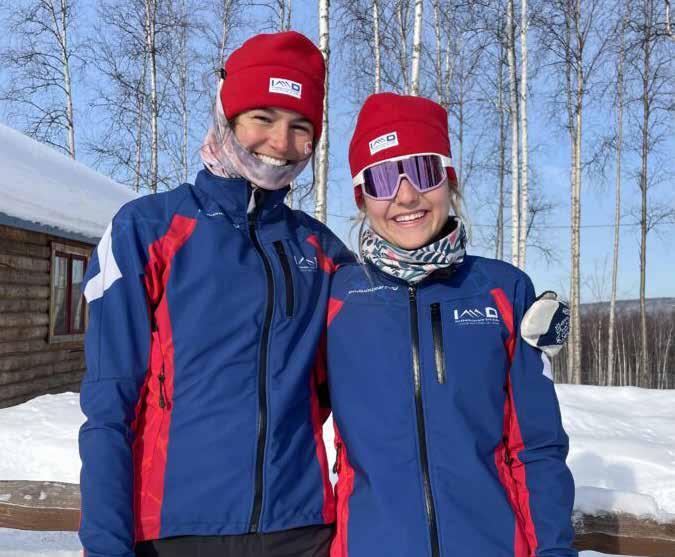
Singer, Livernois, and freeride team rip hardpack and rep Big Sky
Freeride Director Wallace Casper told EBS that BSSEF’s small-town, 45-athlete program isn’t expected to dominate at the International Free Skiers Association North American Championships. But four out of five BSSEF athletes finished in the continent’s top 10 at the season-ending event from April 5-9 in Kicking Horse, B.C.
Two athletes—snowboarder Elijah Singer and skier Hayes Livernois—qualified for IFSA World Championships in Austria next January.
“With the terrain we have in Big Sky, we’re able to train park, moguls, cliffs, steeps, everything,” Casper said. He gave credit to his coaches, who really stepped up the program over the past six or seven years with the goal of qualifying more athletes for big events.
BSSEF typically qualifies an athlete or two for NorAms, which Casper said is a big win. This season, they brought five despite IFSA debuting a tougher qualification process this year. The level of riding “was off the charts,” Casper said.
Big Sky’s freeride team stacked up against much larger programs from Colorado, Utah, Wyoming, California, Canada and the East Coast—Casper said it’s the best of the best.

Singer topped the podium for 15- to 18-year-old male snowboarders, his first season competing in that division. His qualifying run—the first of two runs, worth half the total score—put him in third place. His finals run vaulted him into first place.
“He did a sick pillow line and straight-lined, again super clean,” Casper said. In addition to NorAms, Singer won multiple regional competitions this season, including Snowbird.
“I spoke with Jeremy Jones after the event. He is very aware of who Elijah is, and complimented his run,” Casper said. Jones’ son, Cass, won the 12-14 snowboard category.
Casper said Livernois’ world-qualifying performance might have been the biggest accomplishment due to the massive pool of competition. Just 15 years old, he bested more than
1,000 North American boys, all fighting for about 5 spots to worlds.
Livernois finished second place, sharing the podium with skiers from Colorado and California. He’s the first BSSEF skier to qualify for worlds in about 10 years.
“Couple huge 3’s, some really big airs—it was flawless,” Casper said.
Hayes’ sister, Kira Livernois, was a strong bet in the 12- to 14-year-old female skier category. Unfortunately, she crashed while attempting a big 360 in the finals. Casper said she put it all on the table and went for it, deserving kudos. She still managed to finish 10th place, and fourth overall throughout the season.
Kennedy Cochenour did win that category.
Explore Big Sky 21 April 20 - May 3, 2023 SPORTS
Big Sky freeride skier Hayes Livernois gets big air at Big Sky Resort on his way to a worlds-qualifying effort at the IFSA North American Championships in British Columbia. PHOTO BY TIM RADIGAN
Lange and Mittelstaedt sport their Inter-Mountain uniforms in Alaska. COURTESY OF LEAH LANGE
Casper said her qualifying run was flawless— she linked four technical features, with a couple grabs—and all she needed from her finals run was to stay on her feet and ski clean.



“Kendo has been on the team since she was 10,” Casper said. “That’s the absolute youngest we’ve ever let on the freeride team, so she’s always been an outstanding athlete. [She] lives in Helena, so she only trains on weekends. She maintains a


4.0 GPA, a pretty standout all-around person.”





















BSSEF skier Mac Bertelson finished 30th in the 12-14 male ski category.

“We’re all just one team,” Casper said. “All the kids know each other and ski with all the coaches collectively. I definitely think the new coaches we hired this year helped us step it up. Kevin Nichols has a lot of Freeride World Tour experience… Robert Hawthorn, he’s been helping with big picture stuff with the team.”
Casper added that NorAm’s can be a mixed bag for conditions, because it happens so late in the season. Some years, freeze-thaw cycles create inaccurate results throughout a competition day—hard and fast for the morning runs, soft and sticky by afternoon. At Kicking Horse, conditions set up just right for Big Sky freeriders: a “low tide” snow year, combined with a cold spring.
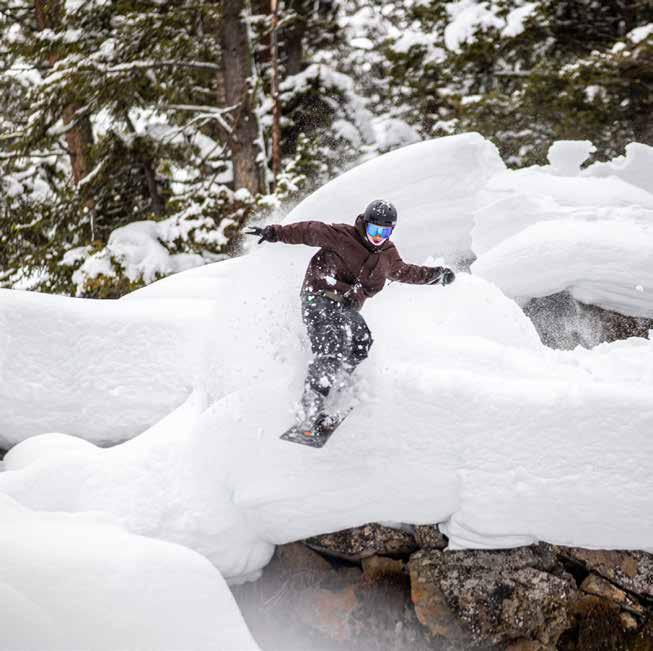
“Our kids definitely do well in rocky hardpack,” Casper said.
























Explore Big Sky 22 April 20 - May 3, 20233
SPORTS
MORE IMPORTANT THAN YOUR HEALTH? 406.993.6949 | bigskynaturalhealthmt.com | 87 Lone Peak Dr, Big Sky, MT Owned and operated by Dr. Kaley Burns, ND BIG SKY’S ONLY NATUROPATHIC DOCTOR AND TEAM SPECIALIZING IN: • Family Medicine • Nutritional Counseling • Acupuncture Regenerative Medicine • IV Nutrient Therapy • Cryotherapy & Hyperbaric Chamber
WHAT’S
Elijah Singer drops pillows on Andesite Mountain on a powder day. COURTESY OF KIRBY GRUBAUGH / KG CONTENT
MILLER TWINS, AGE 3, LIKELY THE YOUNGEST TO SKI 100 DAYS IN A SEASON
BY JASON BACAJ
BIG SKY—Bode Miller, winningest male Alpine ski racer in U.S. history, is no stranger to great feats in skiing. This time around he played a support role as his 3-year-old identical twins, Aksel and Asher, made their mark in the skiing world as likely the youngest skiers to ever ski 100 or more days in a season.
The accomplishment was instigated by the Gorsuch family, Miller said, whose fraternal twins crossed the 100-ski-day threshold at age 4. Both boys grew up with one of Miller’s daughters. Morgan Beck, Aksel and Asher’s mother and Miller’s wife, got to thinking—maybe their twin boys could serve as a rival, skiing 100 days at an even younger age.
“It was last year that we attempted it first,” Beck said. “We hit [76] days and we all got COVID. So, we paused it for last year knowing that we had this year to try again.”
Aksel and Asher started their season on Nov. 28, had a two-week break for Christmas, then hit day 100 on April 6. Most of the ski days were at Big Sky
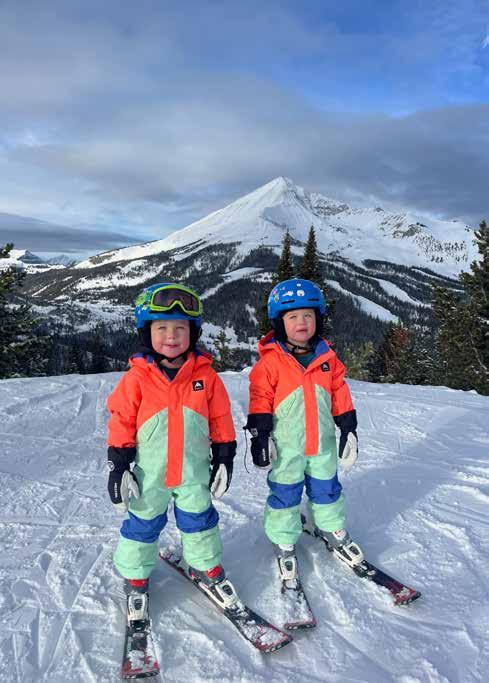

Resort and the Yellowstone Club— among their favorite runs were Powder Park, Magic Forest, Mr. K and pretty much everything off of the Southern Comfort chairlift.
Reflecting back on the season, Miller said the fact that they’re twins probably helped Aksel and Asher reach the goal at such a young age, serving as a fuel for their competitive athleticism. When one of them wasn’t feeling it, the other one was. Since they don’t like being apart, the other would work through whatever negative feelings he had and ski with his brother.
“I think it cultivates that where they can actually watch the other one and kind of feed off of how they are mentally and what they’re dealing with,” Miller said. “I think it’s actually really beneficial.”
Those intangible benefits gained from taking on such a challenge were what Miller and Beck emphasized from a parenting perspective: Even though it can be hard to get up and start the day with tough, physical activity, the twins could handle it.
“Starting this young sets them up for success in other things in life,” Beck said. “They learn that they can do hard things. Even though it’s uncomfortable, and even though it’s challenging, they can do it.”
“If there’s one thing I can do as a parent it’s to instill that in my kids, like, be tough. Don’t freak out,” Miller said. “And skiing teaches that.”
Aksel and Asher’s skiing also noticeably improved throughout the season, Miller noted. By the 100th day, they had some folks out filming the twins skiing and Aksel—who was the more timid skier the prior season—went ripping off down the slope, dipping into the trees looking for little soft snow stashes here and there, leading Miller to tear down after him. Aksel wouldn’t have stopped otherwise.
Although ski days may be further between with school starting next season, Morgan floated the idea that, just maybe, their little sister, Scarlett, would be next in line to break their record as the youngest to ski 100 or more days.
Explore Big Sky 23 April 20 - May 3, 2023 SPORTS
Aksel and Asher Miller are likely the youngest skiers to breach the 100-day mark. COURTESY OF THE MILLER FAMILY
The Miller twins pop out of the trees on their way to a 100-day ski season. COURTESY OF THE MILLER FAMILY
BIG SKY BIGGIE BACK FOR YEAR FIVE

TOTAL RIDERS ALREADY OUTNUMBER THE 2022 EVENT, EARLY BIRD REGISTRATION ENDS MAY 31
BY JACK REANEY
BIG SKY— On Aug. 26, the Big Sky Biggie will tender the legs of bikers from across the nation. Since 2018, Big Sky has hosted this cross-country mountain bike event as a fundraiser for the Big Sky Community Organization, and more recently as a fundraiser for Big Sky’s chapter of Bozeman-based SWMMBA—the Southwest Montana Mountain Bike Association. Last year’s event raised $6,000 for each organization.

Community is the primary beneficiary, according to Race Director Natalie Osborne, who founded the event after deciding there needed to be a bike race in southwest Montana—Butte and Grand Targhee being the closest options.
The race has grown each year since 220 bikers took the inaugural start line in 2018.
As of April 5, 420 early birds have signed up for 2023. That’s already more than 2022’s record total of 408 bikers. For the fifth annual event this August, Osborne is hoping to reach 600.
Early bird registration concludes at the end of May, and pricing will increase on June 1.
“[The Biggie has] gotten kind of a following,” Osborne told EBS. “It’s kind of a big deal in the mountain bike community. We’re starting to see our little bubble expand from people in southwest Montana, Idaho and Wyoming, into southern Utah, Arizona. All the way to the East Coast we have word spreading that it’s a great event and people should come.”
A survey of Big Sky’s technical, rugged trail network, the event has always featured a 30- and 60-mile course. Those courses will see significant improvements this year, Osborne explained.
“Our 60-mile course is probably one of the hardest mountain bike races in the U.S., I’ll just say it,” Osborne said. “It’s a little intimidating: we have wildlife concerns, we have weather concerns with late afternoon showers and thunder that always seem to come in late August. So it’s not for the faint of heart, and I feel like it’s a special tribe that comes every year to do the 60-mile course—it’s huge bragging rights.”
The course includes over 9,000 vertical feet of climbing and features the mules loop, which will reverse direction this year—riders will ascend First Yellow Mule, and descend Second Yellow Mule, which Osborne said is a huge change.
“That climb is hard. Riding up First [Yellow Mule], the grade, the pitch is much steeper and it’s rutty… It can be sort of a grind… I think it will be interesting to see what the pros can do, how fast [they] can get up First Yellow Mule.”
She said the 30-mile course is nothing to sneeze at either, sampling the best trails in Big Sky. Last year, the Biggie added a 15-mile short course which proved popular with families, teens and high school
mountain bike teams from Bozeman and Helena. That 15-mile route will not change for 2023, but the 30- and 60-mile courses change every year, Osborne said.
Also new for 2023, Lone Mountain Land Company has given the Biggie access to 15-20 miles of trail in the Spanish Peaks Club’s ski resort area, replacing a paved portion of the previous course. Osborne said LMLC is one of the event’s biggest supporters and advocates, and it has been fun to work with them.
“Now we are able to incorporate some really cool climbing routes in Spanish Peaks, and some cool descents in their ski resort area. That’s all new, and that’s just incredible… It just goes to show how
supportive the landowners in this town are, for providing these opportunities and supporting these events. They could have easily said no, and they’ve kind of gone out of their way to allow them to happen,” Osborne said.
A cooperative history
When Osborne first set out to establish the Biggie, she found it difficult to string together cohesive 50mile training rides in Big Sky. She wanted to bring awareness to that issue by starting a bike race, while attracting more cross-country mountain bikers to Big Sky.
“Everything was so disjointed,” Osborne said. “We had great pockets of trail, and BSCO was doing
Explore Big Sky 24 April 20 - May 3, 20233 SPORTS
Trophy from the 2018 cross-country mountain bike event. OUTLAW PARTNERS PHOTO
Riders gather on the start line before the 2021 Biggie. PHOTO BY GABRIELLE GASSER
such great work in building, but they weren’t really connected.”
She said the Biggie is unique: in 2018, the event needed to acquire 13 different permits and land-use agreements.
“I got a lot of naysayers,” Osborne recalled. “I was really shocked. All it took was going and talking to these different land managers and finding out how I could connect the trails… Everyone was so supportive.”
Since 2018, Big Sky’s overall trail connectivity has improved.
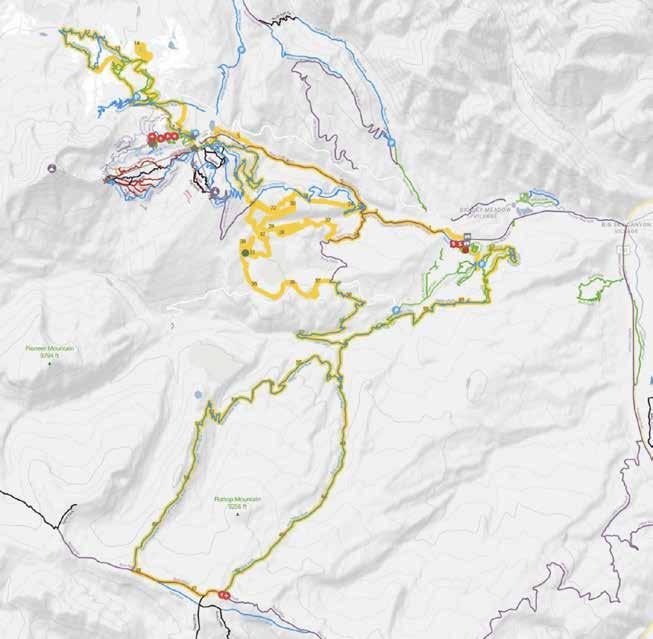
“I would love to say the Biggie had a hand in that, but I don’t know if that’s true,” Osborne said. “There was already a lot of leadership and stakeholders, land managers throughout the Big Sky area that were already talking about fixing this problem.”
Ashley Wilson, BSCO controller and president of Big Sky’s SWMMBA chapter, paraphrased BSCO’s mission: “it’s to build a connected community through recreation. Part of that connectivity is the trails. The reliance on vehicles in a town this small is pretty high, and that’s because a lot of the trails don’t connect.”
While acquiring land-use permits for the Biggie, Osborne learned how much work goes into land access, and said she gained a lot of respect for the work BSCO does. Wilson said BSCO is lucky to have great partnerships in Big Sky, and she’s proud that the community respects BSCO’s trail stewardship.
For the event’s first three years, Osborne said weather was perfect. She knew that they were due for some adversity. It arrived in 2022, cumulonimbus-style.
“We had this thunderstorm roll in… we decided we’d have to just see what happens.”
Osborne said the event’s safety crew is “the bomb,” comprised of the local section of the Gallatin County Sheriff Search and Rescue, Big Sky Resort Bike Patrol, Big Sky Fire Department and an ambulance on standby. That crew helped make the decision to race last year. Racers endured an hour of hail, lightning and mud.
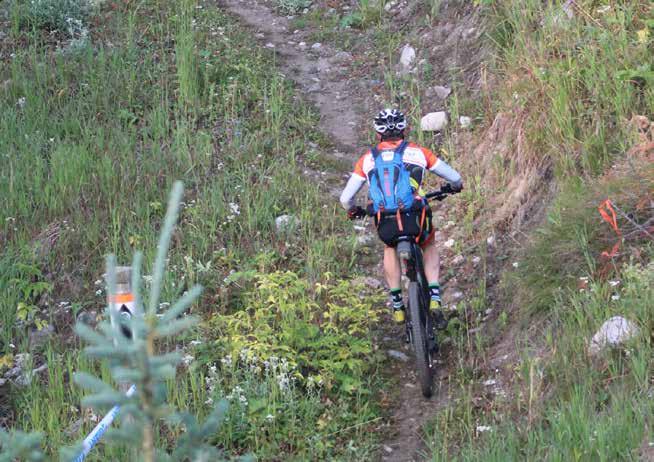
“People were drenched in mud, so happy to finish,” Osborne said. “It just created this even bigger bond between some of the athletes. People who didn’t know each other were finishing together and so happy to have accomplished that.”
‘A town event’
“When I tell people there’s a mountain bike race in Big Sky and I’m marketing it at other events in the Western U.S., everyone is like, ‘oh, Big Sky Resort?”
She said the resort is lift-access, downhill-endurotrail oriented—mostly not suitable for this crosscountry event.
Osborne is proud that the race starts and ends in Town Center, where the Big Sky community exists. The courses do traverse into Big Sky Resort and Moonlight Basin, but mainly the entire valley surrounding Big Sky. When the event finishes, Aspen Leaf Drive is closed for a “huge block party.”
“This is a town event. It’s not a resort event, and that’s really important to me personally,” Osborne said. “[Big Sky Resort] are amazing partners to us—patrol helps us on the day of the event, they have been so generous with their use permitting fees for the trails we do use on their property. Boyne has been a great partner, and the leadership at Big Sky Resort have been some of their biggest advocates for this event… It’s just really important to me that our community had something to gather around, sport related, in town.”
Osborne emphasized the importance of the event’s volunteer support, and said the event is still pursuing help.
“I can say from experience that volunteering for this race is so much fun,” Wilson said.
“Putting on a bike race is almost as rewarding as crossing the finish line in your own race,” Osborne added.
Wilson emphasized Osborne’s effort and leadership with growing the event.
“This is something I heard about before I lived in Big Sky. The amount of respect and camaraderie and overall hype around this race… I’m incredibly honored to be involved in it,” Wilson said. “Natalie is a badass.”
Explore Big Sky 25 April 20 - May 3, 2023
SPORTS
The 2023 60-mile course map. COURTESY OF NATALIE OSBORNE
Rider maneuvers a gentle climb in the 2018 Big Sky Biggie. OUTLAW PARTNERS PHOTO










wildlandsfestival.com TBA GRAMMY AWARD-WINNING ARTIST ANNOUNCEMENT COMING SOON! LARGEST RIVER CONSERVATION EVENT IN HISTORY MUSIC + RIVERS + FILM
THANK YOU TO BIG SKY RESORT STAFF AND ESSENTIAL SKI TOWN WORKERS

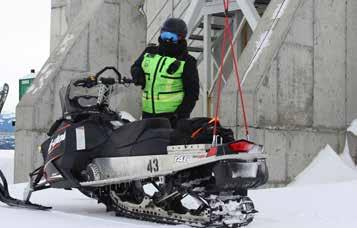
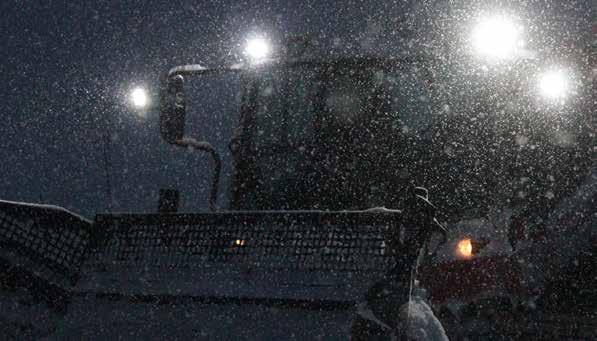
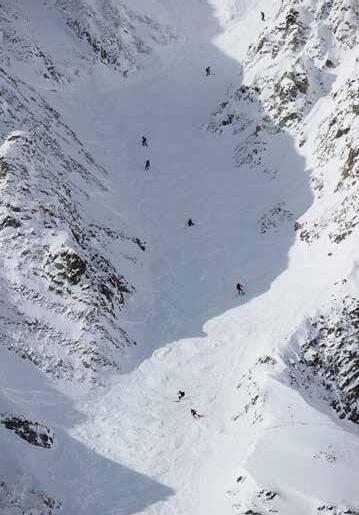


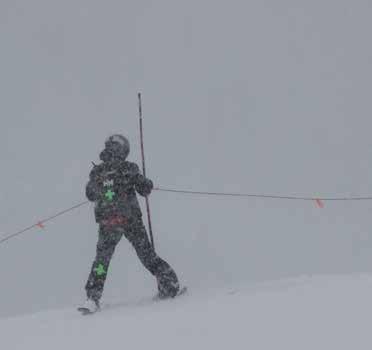
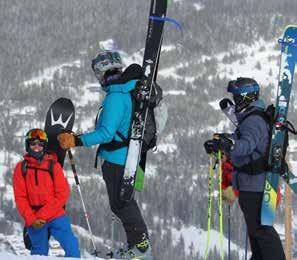

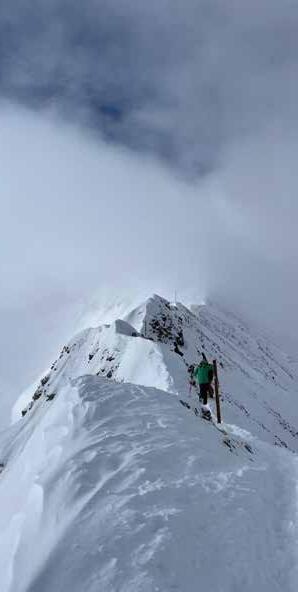
As the long, snowy winter of 2022-23 comes to a close, EBS thanks all who helped make this memorable ski season possible. From ski patrol, lift operations, guest services and mountain operations to industry workers in food and beverage, hospitality, snow removal and transportation, EBS is thankful for all efforts to serve Big Sky’s winter community.
PHOTOS
BY JACK REANEY
Explore Big Sky 27 April 20 - May 3, 2023



JOIN L P CLUB! Order Online Pick Up At Your Favorite Location: Big Sky | Bozeman | West Yellowstone | Ennis Join our rewards program to unlock exclusive offers! LONEPEAKCANNABISCOMPANY.COM M o n t a n a ’ s f i n e s t p r o d u c t s u n d e r o n e r o o f
SHOOTOUT GATHERS COMMUNITY, CELEBRATES CULTURE
PEOPLE’S-CHOICE-WINNING FILM INVOKES THE SPIRIT OF CHET HUNTLEY
BY JACK REANEY
BIG SKY—Stoke was high among the bustling crowd, waiting and sipping outside The Waypoint around 9 p.m. on Saturday. As viewers from the 7 o’clock showing began to emerge from the double doors, a handful said with a promising grin, “enjoy the show.”

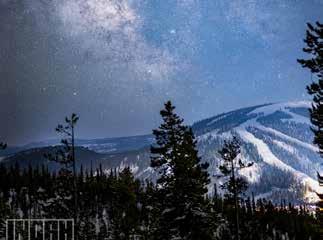
For the Eighth Annual Big Sky Shootout, local photographers and filmmakers filled the big screen for three showings on Saturday night. The show—a festival of 16 short, local films—brought laughter, gasps, cringes, heckling comments, and tears from the crowd, a who’s who of Big Sky locals who packed both the venue’s main and secondary theaters for most of the night. A wide range of winter-lovers submitted films, most of which centered around Big Sky’s community of skiing and snow. It was the Shootout’s biggest year yet, and the first held at that venue since 2019.
The event was produced by Second Season, a cultureoriented program based in Big Sky and led by Erik Morrison, owner of Love Street Media in Big Sky. Morrison created Second Season to promote inclusive, shared experiences and celebrate the culture of Big Sky—one of many destinations where culture is challenged by unfamiliar residents whose actions might negatively impact a community or its surrounding environment. Originally from New England, Morrison understands the struggles of assimilating into the Mountain West and hopes the initiative can help newcomers avoid some of the mistakes he made early on.
“Second Season is basically a platform for onboarding and educating new residents and visitors to mountain communities,” Morrison told EBS, adding that the initiative is currently focused on Big Sky as a “pilot project” before potentially bringing insights to similar communities. He hopes that it can become his life’s work.
“Those shared experiences in the mountains, that’s powerful… That’s Second Season’s mission really, to help continue to create that community, cultivate it,” Morrison said.
Bella Butler, a Big Sky native and 2023 Big Sky Shootout volunteer, gave credit to Morrison for his efforts to make Big Sky a livable place in the long-term.
“I think we all can recognize that Big Sky is a community where everyone is moving at such a sprint,” Butler said. “I think what we [can] lose is recognition of the culture that already exists… We curate a lot of culture and try to come up with what it means to live in Big Sky, and what that’s supposed to look like. I think [Erik is] elevating the culture that already exists, and that’s super rare and was really evident at the event.”
Morrison gave credit to his team of volunteers— Butler, Micah Robin and Andrew Robin—and to local businesses that helped make the shootout possible. He said it’s a community project in the truest sense, and it’s come a long way since 2014.
Community on the big screen
Musician Terry Stebbins’ Big Sky parody of John Lennon’s “Imagine” soundtracked “Tram Tribute,” a
dirtbag production honoring the final days of the Lone Peak Tram. The reflective film opened the show, and won “Best Lifestyle Film.”
Big Sky Resort snow reporter and telemark aficionado Mario Carr evoked gasps, applause and giddy laughter with his 10-minute compilation of mind-bending telemark highlights. In “Snow Way Out,” gentle music calmed audience nerves as Carr navigated dense forest and dropped remote cliffs. Carr’s film won the “Best Line” category.
Carr also emceed the 2023 Shootout, and told EBS it was a very wholesome, roots-of-Big-Sky kind of event with lots of variety in submissions.
Ethan Schumacher showcased stunning camera work and post-production with his three-minute Park PSA, earning “Best Cinematography.”
A 5-year-old decided she was ready to ski the tram, conquered Liberty Bowl and expressed her self-pride in a heartwarming video. Another film, “South Face Anomaly,” compiled face-shots off the tram and won “Best Powder.”
Violating the festival’s rule that clips must be filmed in March 2023, Rob Leipheimer shared captivating footage from a helicopter ride to Lone Peak in October 1995, while the tram was still under construction.
“Spinsters Assemble” pointed to more than just Big Sky’s lack of a commercial laundromat—now closed, the Sit and Spin once included a bar and harbored an “island of misfit toys,” according to the bizarre film which reunited the spinsters for a few shots onscreen in the shootout.
In “Babes on Blades,” three ladies clicked into snowblades and chewed up the resort. In “Jamaican Ski Team,” local athletes—evidently not from Jamaica— learned to stomp with some tough-love coaching, earning third place among people’s choice.
In another film, a Bachelor came to Big Sky with West Coast tech company money and swagger, but local bachelorettes recognized more important things than money and Instagram followers—they bailed on him and skied the tram.
In a tribute to French skier Candide Thovex’s “One of those days” point-of-view skiing series, a ski tech at East Slope Outfitters clocked out for a powder break at Big Sky Resort. He got right back to his ski-waxing duties as he clocked back in to wrap up “one of those east slope days”.
“Weekend Warrior” was produced by longtime Shootout filmmaker Andrew Robin and his crew. They filmed their friend—who grew up in Big Sky but was forced to move to Belgrade—as he worked his nine-to-five job for a day. Robin said it was “hilarious—the truth, mixed with some satire” as they depicted the struggles of driving the canyon to Big Sky on a Saturday powder day. “Weekend Warrior” earned second place in people’s choice.
“Over the years, more and more people have contributed to the event which is awesome,” Robin said. “It’s growing, building and tightening community, everyone is just excited and happy to be here and have a good time.”
The winning shots by local photographers were shown between each film.
‘Don’t Change’
As a dramatic finale, videographer Chris Kamman juxtaposed Chet Huntley’s voice and vision for Big Sky with the town’s growth in the 50 years since development began. His film, “Don’t Change,” won the “Best Social Commentary” category and was voted first place among people’s choice.
In the film’s introduction, Huntley’s voice promised that Big Sky would be built in a manner that discouraged residents from ever needing to say, “get off my property”—Huntley’s quote preceded a rapid-fire montage of “private property” and “no trespassing” signs posted around Big Sky.
Huntley’s voiceover—some borrowed from NBC newscasts—suggested that people slow down and do things more thoughtfully, with more spaces in between. The contrasting visuals showed haste and dense construction in Big Sky.
“I’m no hater, and the last thing I want to do is put out a negative video, for real,” Kamman told EBS after his film won people’s choice on Saturday. “I love this town, and I understand the development and whatnot. But more than anywhere else, I grew up here. I’ve seen the change, and I’ve seen the culture be squeezed a little bit.”
Kamman’s film also showed smiling faces, ski highlights and dramatic scenery.

“[The film is] just trying to show there’s still culture alive. But it’s definitely getting pushed and a lot of it has to do with this rush of development,” Kamman said. “The reason I put Chet Huntley’s quotes in there, my favorite of his is, is ‘we need to do things with more spaces in between.’ I think Big Sky is growing too fast without enough time to think. I think it would be good thing for everyone to slow down and think about what we’re doing. People who are moving here want culture. They want ski culture… I think that’s being pushed out a little bit.
“The locals want it, the old-timers want it, and the new people in town want it,” he added.
Kamman posted the video on his own Skylab Media House social media pages, and it will be added to Second Season’s Big Sky Shootout channels among other films later this week.
“[Kamman] makes amazing films every year,” Carr told EBS. “I think that’s his best, just showing the change and not being all doom and gloom about it either. But recognizing that it’s not exactly what Chet set out for, 50 years later.”
Onstage after winning the grand prize, Kamman told the audience: “This is the best event of the year in my opinion. It’s all about culture, obviously skiing but more so than anything else, keeping culture alive. In Big Sky it’s being pushed and squeezed in many ways, and this event keeps it going. It’s important now more than ever… Like Chet said, if we work on things we’ll have better and happier news coming soon.”
Explore Big Sky 29 April 20 - May 3, 2023
A&E ARTS & ENTERTAINMENT
Jonathan Stone’s shot from the Dirtbag Powder 8’s won “Best Lifestyle Photo.”
PHOTO BY JONATHAN STONE
Noah Weinstein’s “Milky Way Stack” won the “Best Landscape Photo” category. PHOTO BY NOAH WEINSTEIN / INOAH PHOTO Locals wait for doors to open before the Big Sky Shootout's 9 o'clock showing on April 8. PHOTO BY JACK REANEY
REFLECTIONS ON DOGS, HEALTH AND HOLLYWOOD
FORMER “GODFATHER” CASTING DIRECTOR AND BIG SKY RESIDENT ANDREA EASTMAN LOOKS BACK ON HOW HER GOLDEN RETRIEVER, TROOPER, HELPED HER HEAL FROM OPEN HEART SURGERY AND INSPIRED A CHILDREN’S BOOK.

 BY JULIA BARTON
BY JULIA BARTON
BIG SKY—By the time Andrea Eastman moved to Big Sky full time in 2005, she had a storied career in Hollywood as a casting director and agent for various film projects. Perhaps her most well-known accomplishment was casting the 1972 production “The Godfather” at the age of 26.
Eastman’s career and marriage led her to bounce around the U.S. for years between California and the East Coast, but a visit to western Montana in the late 1990s spurred a love for the state.
In 2020, Eastman spent three months away from her Gallatin County home for open heart surgery. She’d been struggling to breath at altitude and a consultation with a Bozeman cardiologist revealed that she had a leaky mitral valve, effectively meaning that a portion of her blood was not flowing properly through her heart.
Eastman and her beloved golden retriever, Trooper, traveled down to Los Angeles for the surgery and the pair lived out of the famous Beverly Hills Hotel during Eastman’s recovery. Eastman commissioned an author to tell the story of Trooper’s crucial role in her recovery journey and in November 2022, the children’s book “Trooper at the Beverly Hills Hotel” was published.
“I've had dogs forever and they've all been amazing dogs, but there was something very special about Trooper,” Eastman told EBS in an April interview. “I know for a fact I never would have healed so well and so quickly without the love of this dog.”
The book, written by Susan McCauley and illustrated by Darlee Orcullo Urbiztondo, covers the duo’s stay at the Beverly Hills Hotel, which happened to coincide with lockdown stages of the COVID-19 pandemic. The hotel was running at a very limited capacity, Eastman explained, but she’d been connected with the hotel throughout her years in Los Angeles and worked out a deal to stay during her recovery.
During her immediate recovery, Eastman was not particularly mobile, so hotel staff helped walk Trooper around the grounds. As Eastman’s recovery progressed and she began taking Trooper for longer and longer walks around the hotel, the staff grew friendly with Trooper.
“So Trooper was completely beloved by the whole hotel,” Eastman said. “He would prance around with his leash in his mouth and he would go behind the desk every morning and make sure that everybody pet him.”
Illustrations in the book depict Trooper in this way, delightfully making acquaintance with hotel staff while patiently waiting for his owner to get back on her feet. Eastman described Trooper as her caregiver. Eastman recalls her doctor telling

her that she’d heal faster if she was happy. With Trooper by her side, she was able to persevere through what could have quickly become a depressing time.
Following a successful recovery, Eastman and her pup said goodbye to the Beverly Hills Hotel and moved back to their Bozeman home.
“[The book is] really about the love of the dog and the dog’s love for me,” Eastman said. “And I mean, the book really is adorable.”
Trooper died in January 2022 at 13 and a half years old. Eastman cared for him in his old age much as Trooper had cared for her following her surgery.
“I wanted Trooper to live on,” Eastman said about the inspiration for the book.
The book has raving Amazon reviews from various big names that Eastman worked with throughout her career, including Sylvester Stallone, Cindy Crawford and Marshall Brickman.
Eastman’s casting and agent career spanned more than 30 years, she said. In 2022, the same time she was coping with Trooper’s death and working on the book, she celebrated the 50th anniversary of “The Godfather” with friendly faces including the film’s lead, Al Pacino. Eastman was the head of casting for Paramount at the time of the film, which premiered during a time when young women were few and far between in the industry.
“I mean, I started working and there were literally no women executives,” Eastman said. “People thought, ‘Oh my God, how could she possibly have her job?’”
People often made assumptions about how Eastman rose to her position, but he explained that she was just “kind of fearless.” She transitioned from casting to being a talent agent for 27 years before she made the move to Montana in the early 2000s.
Despite her heart surgery to repair her damaged mitral valve, she still struggles with the high elevation of Gallatin County, making it difficult to ride her horses and enjoy everything Montana has to offer. She plans to sell her Bozeman home and move back to Los Angeles to live closer to friends and be at a more manageable elevation.
“It's gonna break my heart,” Eastman said. “I kind of created this house and I love it but I'm gonna have to put it on the market this summer and regretfully leave Montana, but I have lots of friends so hopefully I can come back.”
“Trooper at the Beverly Hills Hotel” is available online on Amazon, Barnes & Noble, and Walmart.
Explore Big Sky 30 April 20 - May 3, 20233 A&E
Andrea Eastman and Trooper enjoy a wintery Montana walk together. PHOTO COURTESY OF ANDREA EASTMAN
Eastman said that Trooper was known to carry around his own leash on walks. PHOTO COURTESY OF ANDREA EASTMAN
The cover for “Trooper at the Beverly Hills Hotel” features Trooper holding his leash in his mouth in front of the hotel’s iconic facade. IMAGE COURTESY OF ANDREA EASTMAN
BIG SKY EVENTS CALENDAR
Thursday, April 20-May 3
If your next event falls between May 4-17, please submit it to media@theoutlawpartners.com by April 26.
THURSDAY, APRIL 20
Visit Big Sky Board of Directors Meeting
Big Sky Chamber of Commerce, 8:30 a.m.
Community Acupuncture
Santosha Wellness Center, 11 a.m.
Top 10 Business Law Headaches and How to Avoid Them
Big Sky Chamber of Commerce, 1 p.m.
ARTventure Afterschool Program
BASE, 4:30 p.m.
Fire Adapted Big Sky
Screening: "Elemental: Reimagine Wildfire"
The Waypoint, 5 p.m.
AA Meeting
Big Sky Chapel, 7 p.m.
Screening: Throwback Ski Movies
The Waypoint, 8 p.m.
Live Music: Road Runner Tips Up, 9:45 p.m.
FRIDAY, APRIL 21
Library Storytime
BASE, 10:30 a.m.
Big Sky Besties
Big Sky Community Library, 3 p.m.
Open Pottery Studio
BASE, 5 p.m.
Screening: Concerts on the Big Screen
The Waypoint, 8 p.m.
Live Music: Squirrel Gravy Tips Up, 9:45 p.m.
SATURDAY, APRIL 22
AA Meeting
Big Sky Chapel, 7:30 a.m.
St. Joseph’s Mass
Big Sky Chapel, 5 p.m.
End of Season Party ft. Bluebelly Junction
The Waypoint, 8 p.m.
Live Music: DJ Take A Chance Tips Up, 10 p.m.
SUNDAY, APRIL 23
St. Joseph’s Mass Big Sky Chapel, 8 a.m.
All Saints in Big Sky Big Sky Chapel, 10 a.m.
Open Pottery Studio
BASE, 4 p.m.
Big Sky Christian Fellowship Service
Big Sky Chapel, 4:30 p.m.
Screening: Throwback Movies
The Waypoint, 8 p.m.
MONDAY, APRIL 24
Library Storytime
BASE, 10:30 a.m.
AA Women’s Meeting
Big Sky Christian Fellowship Offices, 5:30 p.m.
Woodburning Community Art Class
BASE, 6 p.m.
NA Meeting
Big Sky Medical Center, 6:30 p.m.
Super Smash Bros. Tournament The Waypoint, 7 p.m.
TUESDAY, APRIL 25
AA Meeting
Big Sky Chapel, 5:30 p.m.
WEDNESDAY, APRIL 26
AA Meeting Big Sky Medical Center, 12 p.m.
Open Studio
Big Sky Artists' Collective Studio & Gallery, 12 p.m.
Emotional First Aid with Shannon Steele
Santosha Wellness Center, 6 p.m.
Trivia
The Waypoint, 7 p.m
THURSDAY, APRIL 27
ARTventure Afterschool
Program
BASE, 4:30 p.m.
AA Meeting
Big Sky Chapel, 7 p.m.
Screening: "Blood Road"
The Waypoint, 6 p.m.
Screening: Throwback Ski Movies
The Waypoint, 8 p.m.
FRIDAY, APRIL 28
Library Storytime
BASE, 10:30 a.m.
Big Sky Besties
Big Sky Community Library, 3 p.m.
Open Pottery Studio
BASE, 5 p.m.
Screening: Concerts on the Big Screen
The Waypoint, 8 p.m.
SATURDAY, APRIL 29
AA Meeting
Big Sky Chapel, 7:30 a.m.
St. Joseph’s Mass
Big Sky Chapel, 5 p.m.
SUNDAY, APRIL 30
St. Joseph’s Mass
Big Sky Chapel, 8 a.m.
All Saints in Big Sky
Big Sky Chapel, 10 a.m.
Open Pottery Studio
BASE, 4 p.m.
Big Sky Christian Fellowship Service
Big Sky Chapel, 4:30 p.m.
Screening: Throwback Movies
The Waypoint, 8 p.m.
MONDAY, MAY 1
Library Storytime
BASE, 10:30 a.m.
AA Women’s Meeting
Big Sky Christian Fellowship Offices, 5:30 p.m.
NA Meeting
Big Sky Medical Center, 6:30 p.m.
Competitive Video Games
The Waypoint, 7 p.m.
TUESDAY, MAY 2
AA Meeting
Big Sky Chapel, 5:30 p.m.
Bingo with the American Legion Post 99 Riverhouse BBQ & Events, 5:30 p.m.
WEDNESDAY, MAY 3
AA Meeting
Big Sky Medical Center, 12 p.m.
Open Studio
Big Sky Artists' Collective Studio & Gallery, 12 p.m.
Library Volunteer Time
Big Sky Community Library, 4 p.m.
Trivia
The Waypoint, 7 p.m.
FEATURED EVENT:
The Waypoint’s End of Season Party featuring Bluebelly Junction
Big Sky Resort will close for the season on Sunday, April 23 and to celebrate the superb winter we’ve had here in Big Sky, the Waypoint is hosting an end of season party on Saturday, April 22 at 8 p.m. featuring live music from Bluebelly Junction.

Explore Big Sky 31 April 20 - May 3, 2023 A&E
Do You or Someone You Know Need Help Getting Sober? Contact A.A. - We’re alcoholics helping other alcoholics stay sober. Call 1-833-800-8553 to talk to an A.A. member or Get the Meeting Guide app or Go to aa-montana.org for virtual and face-to-face meeting times and locations
Big Sandy


25,000± acre ranch near Big Sandy, MT. 18,124± acres deeded and over 8,000± acres BLM and State lease the ranch is a 650 cow calf pair and had 5,000± tillable acres plus a 30+ year outfitting history for trophy mule deer and big horn sheep hunts. $17,450,000 |

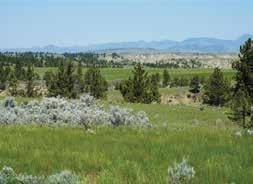







Big Sky
Incredible views of Lone Peak, Mountain Village and Andesite. This home has been partially renovated and would be perfect for a new owner to complete the renovation to their own specifications. Ski accessable with local knowledge.

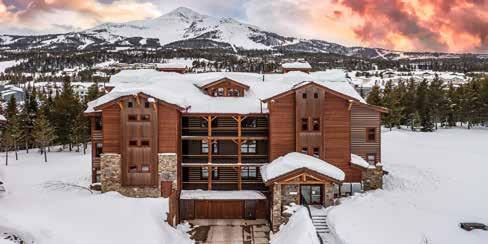

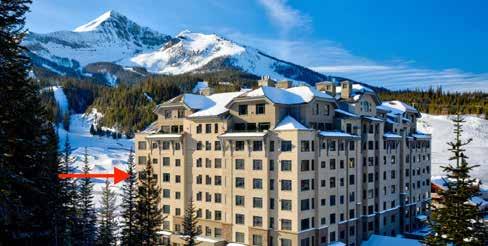
DON’T JUST VISIT HERE, LIVE HERE. 60 Big Sky Road #10707 | 2 Beds | 3 Baths | +/- 1,322 Sqft. MLS# 380756 | Summit Hotel | $1,575,000 Listing Advisor: Stacy Ossorio, Broker | Private Office stacy.ossorio@engelvoelkers.com | 406.539.8553 Spanish Peaks Club Condos #28 | 4 Beds | 3 Baths | +/- 2,552 Sqft. MLS# 380041 | $1,850,000 Listing Advisor: Stacy Ossorio, Broker | Private Office stacy.ossorio@engelvoelkers.com | 406.539.8553 54245 Gallatin Road | 2 Beds | 1 Baths | +/- 1,254 Sqft. MLS# 380263 | Approx. 150 ft of Gallatin River | $2,100,000 Listing Advisor: Stacy Ossorio, Broker | Private Office stacy.ossorio@engelvoelkers.com | 406.539.8553 7 Sitting Bull Road # 2202B | 4 Beds | 3 Baths | +/- 2,060 Sqft. MLS# 380041 | $2,125,000 Listing Advisor: Greg Smith | Global Luxury Real Estate Broker greg.smith@engelvoelkers.com | 406.599.8469 ©2023 Engel & Völkers. All rights reserved. Each brokerage independently owned and operated. All information provided is deemed reliable but is not guaranteed and should be independently verified. If your property is currently represented by a real estate broker, this is not an attempt to solicit your listing. Engel & Völkers and its independent License Partners are Equal Opportunity Employers and fully support the principles of the Fair Housing Act. Scan for more listings! Montana406.com DON PILOTTE, BROKER | 406.580.0155 | BHHSMT.COM ©2023 BHH Affiliates, LLC. An independently owned and operated franchisee of BHH Affiliates, LLC. Berkshire Hathaway HomeServices and the Berkshire Hathaway HomeServices symbol are registered service marks of Columbia Insurance Company, a Berkshire Hathaway affiliate. Equal Housing Opportunity.
6 SIOUX
$2,770,000
#377658
|
ZY BROWN RANCH RD
Open 6:30am to 8pm • 406.995.4636 • Located in the Meadow Village Center next to Lone Peak Brewery • Delivery Service • Pre-arrival Fridge & Cupboard stocking www.countrymarketofbigsky.com
#368590
MAKING IT IN BIG SKY: LARKSPUR GROUP
 BY MIRA BRODY
BY MIRA BRODY
BIG SKY—Lori Addicks’ favorite wildflower is the Mountain Larkspur, a resilient, high altitude flora that grows abundantly along Big Sky’s mountainsides. It feels fitting then, that Addicks’ business, Larkspur Group, shares its name, and was founded after one career ended and she felt the inspiration to strike out on her own, leaping into a new business venture aimed toward helping others develop strong leadership skills.
While her clients span across the globe, many still reside right here in Big Sky, developing leaders and teams to reach their full potential. When she’s not working however, Addicks loves the region’s great outdoors, including skiing in winter, hiking in summer, and traveling with her husband, Rich, to watch their daughter compete as a professional golfer on the LPGA’s Epson Tour.
This series is part of a paid partnership with the Big Sky Chamber of Commerce. The following answers have been edited for brevity.
Explore Big Sky: I’d like to start with a little background information on you, when did you come to Big Sky and what brought you here?
Lori Addicks: Skiing and the tram brought our family to Big Sky in 1996. Like so many others, we fell in love on our first visit. Two years later we had built a home, knowing one day we would live here full time. In 2013, my husband and I began calling Big Sky home. Having grown up in Oregon, we are happy to be back West, after years of living and working in the South.
EBS: How did Larkspur Group start? Was it inspired by a need you observed?
LA: In 2008 when the recession hit, I lost my job as vice president of learning and development for a national residential property management company. Before that I worked 13 years for the Coca-Cola Company in leadership development. For a long time, I had wanted to strike out on my own, leveraging my years of experience and the relationships I had made. So out of need and want, I formed the Larkspur Group. (Mountain Larkspur being my favorite wildflower).
I had no idea where that leap would lead me, but I knew it would be to a place where I could help others with my years of experience. Helping others inspires me.
My work focuses primarily on developing leaders and teams to be more effective and productive as
they work toward continuous improvement. The greatest need I have found, working with both forprofit and nonprofit organizations, is developing the next generation of leaders.
EBS: What is the best part about your job?
LA: The variety. I’m lucky to work with so many different organizations and people. In a typical week I might be facilitating a virtual learning session, conducting leadership coaching, consulting with managers and leaders, leading a strategic planning process, or in-person teaching.
I design and develop all the leadership sessions I deliver, so that is another aspect that provides variety to my work. Because my clients are based not only in Montana, but spread across the country and around the world, travel is a part of my work that I enjoy as well. As a consultant, I have had the good fortune to travel internationally to Brazil, Kenya, Dubai, Iceland and Turkey.
Some of my local clients include Gallatin River Task Force, Big Brothers Big Sisters, Big Sky Chamber, Big Sky Resort Tax, Big Sky Arts Council, Big Sky Discovery Academy, Morningstar Learning Center, Wellness in Action, Big Sky Resort, East Slope Outdoors, Highline Partners and NorthWestern Energy.
Some of my national and international clients include Boys and Girls Club of America, Equality Now, The Coca-Cola Company, Cox Enterprises, Red Butte Garden, People’s Health Clinic, Aetna, McKesson, Children’s Healthcare of Atlanta, Atlanta Botanical Garden, CARE.
EBS: In your experience working with businesses, teams, and leaders, what is one element you’ve seen that is underutilized?
LA: I would say the most underdeveloped skills are what many refer to as “soft skills.” They are not soft at all and are better referred to as “essential skills.” Everyone in the workplace needs these skills to be effective. Examples of essential skills include communicating effectively both written and conversationally, thinking critically, solving problems, building trusting relationships, collaborating with colleagues, expressing empathy, engaging in disagreement productively, showing vulnerability, and adapting to name a few. Essential skills are crucial for long-term success both individually and as part of teams and organizations. This is where the greatest opportunity for growth and continual improvement exists.
EBS: It seems you have clients across the country and around the world. Do you find that there are unique issues specifically in Big Sky or the surrounding area that you need to address with your local clients?
LA: People are people, really. No matter where, they all need the same types of skills as leaders. Leadership doesn’t have a zip code.
EBS: You’ve been in the area for some time and have seen a lot of change—has your business been affected in any way and if so, how has it adapted?

LA: The biggest change affecting what I do has come about because of the pandemic. Prior to the pandemic, the majority of my work was done in-person, which is always the best way to teach and learn. But the pandemic required me to adapt. In 2020, I spent several months converting my curriculum over to virtual sessions, and before I knew it, I was back in business doing the same thing, just virtually. In no time at all, I was busier than ever.
EBS: What is the best business advice you have ever received?
LA: Never stop learning and growing. It’s important to stay current, relevant and ready for whatever might come next. It’s rare these days for anyone to remain in one career path or with one company for their entire career. Being able to learn, grow and adapt enables us to take advantage of opportunities that continue to present themselves as the world of work evolves.
Explore Big Sky 33 April 20 - May 3, 2023 BUSINESS
Lori Addicks, owner and founder of Larkspur Group, aims to help the next generation of leaders and teams in today’s workforce. PHOTO BY RICH ADDICKS
The greatest need I have found, working with both for-profit and nonprofit organizations, is developing the next generation of leaders.
” “
–
Lori Addicks, owner and founder, Larkspur Group
WEISKOPF’S WARRIORS RAISING MONEY FOR PANCREATIC CANCER RESEARCH
OUTLAW PARTNERS
Big Sky lost a legend last August when legendary golfer and local resident Tom Weiskopf passed away from pancreatic cancer, but this month people can step up to honor his memory by participating or donating to Weiskopf’s Warriors, a team participating in a fundraiser for the nonprofit Pancreatic Cancer Action Network.
On April 29, the nonprofit is holding PurpleStride, a fundraiser with 60 events across the country. Money raised during PurpleStride supports research like the PanCAN Early Detection Initiative and free support and resources from PanCAN patient services, according to the event website.
Weiskopf’s Warriors has raised $68,110 as of April 7 and is led by his wife, Laurie.
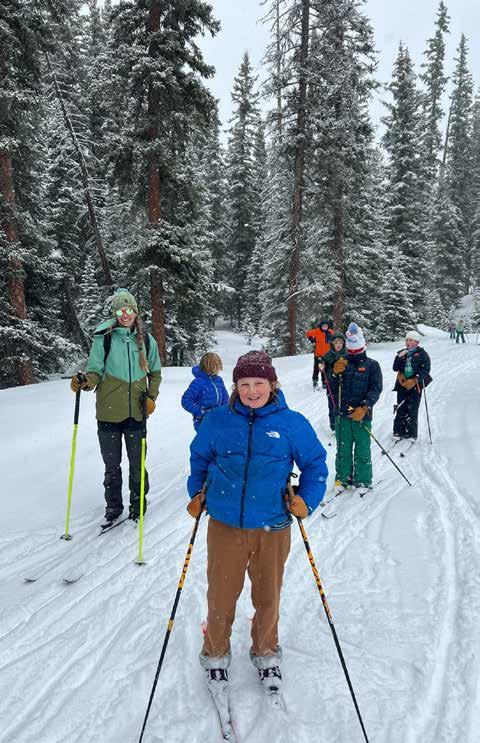
Weiskopf moved to Montana after his golf career, which saw him win the 1973 Open Championship at Royal Troon. He also finished second at the Masters four times between 1969 and 1975. He was elected to the World Golf Hall of Fame this past March.
After his playing career came to a close, Weiskopf got into designing golf courses. He designed more than three dozen courses around the world, including the courses at the Yellowstone Club and Spanish Peaks in Big Sky and the Black Bull Golf Course in Bozeman.
MARTY PAVELICH ICE RINK CLOSES AFTER ‘RECORD SEASON’
EBS STAFF
According to a social media post from Big Sky Community Organization’s BASE account, the Marty Pavelich Ice Rink reached the end of its “record season” on April 7.

The rink hosted Big Sky’s most expansive season ever for the Big Sky Skating and Hockey Association’s hockey program, another popular adult curling league, and open skate times for the community. In December, the rink was also dedicated to longtime local and hockey legend, Marty Pavelich.
The post added, “a special shout-out to Marco, Bill, Justin, and the rest of the maintenance team for set-up, break-down, working the chiller, flattening the ice, running the Zamboni, and generally keeping the rink and surrounding area in great shape.”
LPHS NATIONAL HONOR SOCIETY HOLDING FUNDRAISER IN HONOR OF LATE STUDENT SKYE SWENSON
EBS STAFF
BIG SKY—The Lone Peak High School National Honor Society is holding the Socks for Skye fundraising event for Eagle Mount, a Bozeman-based organization that helps people with disabilities or cancer enjoy the outdoor activities Montana is known for. Students are selling socks with a custom design in honor of the fundraiser’s namesake, Skye Swenson, a student that utilized Eagle Mount’s services before her passing in February of 2020.
“Socks for Skye was started by Skye Swenson’s classmate Lilly McCarthy after [Skye] passed away as a way to remember Skye and to support Eagle Mount, which was an organization that Skye worked with and participated in their ski events,” explained NHS president Jessie Bough.
The socks, designed by Eve Vandreil, feature clouds and butterflies on a bright sky blue background with green accents in the spirit of Swenson’s memory.
“Eagle Mount promotes a variety of athletic activities for people with disabilities, physical and cognitive,” explained faculty supervisor Dr. Kate Eisele. “[Proceeds from] this fundraiser go directly to Eagle Mount to support those services so they can help as many people as possible.”
The socks are available for a $20 donation now through June 1 and can be picked up at the high school. Socks may be purchased here.
Gus Hammond contributed to reporting on this story.
Explore Big Sky 34 April 20 - May 3, 20233
COMMUNITY
Students from Discovery Academy went out Nordic skiing on trails around Big Sky on a recent winter sports day. The students alpine ski, Nordic ski and ice skate every week from January until April. PHOTO BY LESLIE KILGORE
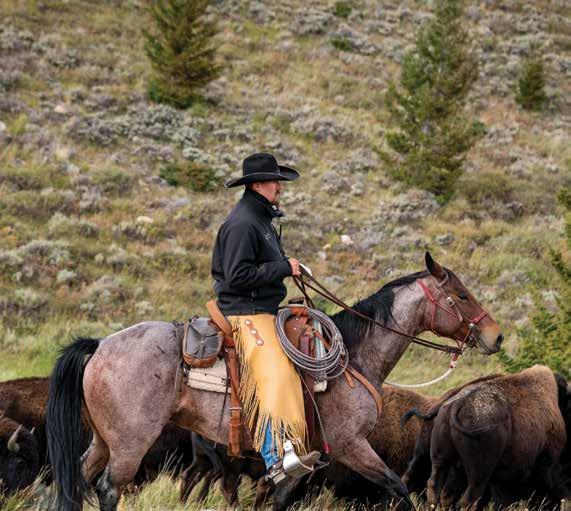





NATURAL. SUSTAINABLE. HEALTHY. EXPLORE MEMBERSHIPS AT REGENMARKET.COM FARM FRESH FOOD, DELIVERED TO YOUR DOOR. ScantoOrderOnline EST. 1997 Big Sky, MT bigskybuild.com 406.995.3670 REPRESENTING AND BUILDING FOR OUR CLIENTS SINCE 1997
OPINION
THE BIG SKY WAY THE HANGING CHAD
BY DANIEL BIERSCHWALE EBS CONTRIBUTOR
Elections have been won and lost by this small but mighty fragment of paper on punch-card ballots. You might remember that hanging chads were partly responsible for the high number of invalid votes during the controversial 2000 U.S. Presidential election.
Our diverse backgrounds shape us as citizens, each with a unique experience with democracy. That experience is layered with varying degrees of civic knowledge and understanding. This column will peel back those layers and build a core of understanding to inform voting decisions. Topics will scale in complexity over time and focus on Big Sky elections, government services, and associated public funding.
It’s easy to want to skip to the BIG questions: How does municipal government operate? How do I run for a local office? Why are my taxes so high? We will get to those substantive topics in due time, but we’re going to need some primer to support those community conversations.
Let’s start with a basic statement I’ve heard more than once—“I didn’t know Big Sky has elections that I can vote on.” The response to that statement is a resounding YES! There are local elections you can and should vote in.
Big Sky voting statistics
Census data from 2020 estimates approximately 3,854 people residing within the Resort Area District boundary. In November of last year registered voters of the same boundary were 2,491. Approximately 65% of the census population of Big Sky is registered to vote. This is significantly less than county participation: 82% in Madison and 75% in Gallatin. The key takeaway is that 35 out of
100 people who chose to make Big Sky home are unregistered to vote in local elections—more than 1/3. Your ballot is the most basic tool you have in making your voice heard, but you do not get a ballot without registering.
Register to VOTE
It’s now easier than ever to register to vote. The U.S. Election Assistance Commission, Montana Secretary of State, Gallatin County Elections Department, and Madison County Elections Department all offer wonderful resources to not only help you register, but also understand voter issues.
To be eligible you must be a US citizen, at least 18 years of age on or before the next election, and be a Montana resident for at least 30 days. You’ll need to provide one form of qualified ID with a residential address. The address that you use to register is critical to identifying the ballot issues applicable to you in your precinct (we will unpack precincts in a future topic). Misidentified address information can lead to you not receiving the appropriate issues on your ballot considering many issues are tied to geographical boundaries—for example, only voters in the Big Sky Resort Area District vote on board members. It’s also important to note that you can only be registered to vote at one address regardless of how many properties you own.
Check out MyVoterPageMT.com to see your personal registration details as well as ballot status.
When are VOTES
Elections occur in Montana in one of four scenarios: general, primary, special, and special purpose district/school.
General elections occur in the month of November. Statewide elections are held in even numbered years. The next general election affecting Big Sky is Nov. 5, 2024. This will also be the next U.S. presidential election.

For those that follow party politics, the primary election helps select candidates and appoint delegates for the party. Montana has an open primary, which means a voter does not have to formally affiliate with a political party in order to vote in its primary. Montana primaries are typically held in the June prior to the general election.
The most uncommonly used voting tool is a special election which occurs at a time specified by the County Elections Office for qualified, appropriate, and limited ballot measures.
Last but not least is the special purpose district/ school election, which takes place in the month of May. The vast majority of Big Sky specific elections occur at this time. This year’s election date is May 2; ballots were mailed on April 14.
VOTE BIG SKY!
Why does all this matter? Generally, government services have locally elected leaders, often in the form of trustees/directors/council members. These positions can be rewarding opportunities for those choosing public service. Election of those officials is the most common ballot issue voters are familiar with. This year Big Sky K-12 School District No.72 and Ennis K-12 School District No. 52 are holding trustee elections. Another important ballot measure this year is the school bond for District 72 referenced in EBS as well as two levies for District 52. We will dive deeper into bonds, mills and assessments in a future column.
So, don’t be a hanging chad, get out and vote for your community Big Sky—it’s your right and responsibility as a US citizen.
Daniel Bierschwale is the Executive Director of the Big Sky Resort Area District (BSRAD), the local government agency that administers Resort Tax. As a dedicated public servant, he is committed to providing a ‘solid base’ for increasing civic engagement and voter education.

Explore Big Sky 36 April 20 - May 3, 20233
ADOBE STOCK PHOTO
DISPATCHES FROM THE WILD BISON ARE BUFFALOED EACH YEAR
BY BENJAMIN ALVA POLLEY EBS COLUMNIST
A century ago, we didn’t have the foresight to realize Yellowstone, like many national parks, needed to be bigger. The lines we drew were a great idea, but they didn’t include wintering ranges on the valley floor. Winter pummels the Yellowstone plateau yearly with deep snowpack and cold temperatures, forcing many bison, deer, elk, and antelope to instinctively migrate out of the park boundaries to seek greener pastures at lower elevations. But much of the land outside of the park is owned by ranchers who run cattle on private and public lands, some of whom don’t want to share grazing rights with large wily mammals like bison—the only park animals whose numbers are aggressively controlled. Many people have no idea that many bison who leave the park in winter are either quarantined for brucellosis, killed by the state of Montana, allowed to be hunted by eight western tribes, or transported to other tribal reservations elsewhere.
Historically, American bison ranged from Alaska to the Gulf of Mexico, covering two-thirds of the North American continent around 9000 B.C. in a rich grassland called the Great Bison Belt. In the late 1800s and into the 1900s, millions of bison were extirpated from their former range by the westward expansion of European settlers and fur traders, cutting off the primary food supply of many Native American tribes who hunted the animals. A few remaining bison hid in Yellowstone's mountainous, rugged Caldera, where their numbers steadily increased.
Although the park’s current carrying capacity is estimated at 10,000 animals, in 2022, biologists counted 6,000 animals parkwide—but still, Yellowstone officials manage bison each winter by culling about a third of that population. Vehicle collisions have killed 22 bison along U.S. Highway 191 outside West Yellowstone and two outside Gardiner—another reason not to waste
time installing more wildlife bridges—but the agency also actively manage their numbers. One method is through hosting hunts. Over the last four months, nearly 8 bison a day have been killed with a few days having nearly 50 killed, with 1,262 killed thus far and 1,544 removed entirely from the Yellowstone ecosystem. Tribes have killed 929, there were 100 unknown hunts/ harvests (which means it’s unknown whether it was a state or tribal hunter) and 75 state hunter lottery tags, equaling 1,104 hunted this season out of 1,262 dead.

But many of those animals are part of the tribal treaty hunts, and the bison harvested by tribes are distributed throughout those communities. In addition, the Bison Conservation Transfer Program relocates bison that wander outside the park to reservations. Bison were and still are culturally significant to many tribes, and this is a small step toward getting back what was drastically taken away. Two hundred and eightytwo bison were transported to the Assiniboine and Sioux tribes at the Fort Peck Reservation. One-hundred and seventy have been distributed to 23 other tribes across 12 states. Over 805 bison are in a capture facility that Yellowstone released inside the park boundaries after the public and tribal hunts, which has ended for some tribes but not others. The Shoshone-Bannock can hunt year-round.
As for the rest of the culled bison, they are eliminated because of ‘safety concerns’ between bison and the public, like having too-close encounters, property damage, and fear of disease transmissions from bison to cattle.
Most bison kills occur outside the gates of Yellowstone in Beattie Gulch near Gardiner, Montana, where a third of the park’s total bison population seeks shelter from winter’s wrath. Following their wild instincts to find winter range, many of these animals are punished out of fear of spreading brucellosis to cattle.
Brucellosis is a disease caused by bacteria that affects many animals, including bison, cattle, deer, dogs, elk, goats, swine, and sheep. The symptoms
include fever, fatigue, joint pain, and weight loss. It can decrease milk production, cause animals to abort, infertility, and lameness. The disease can also be transmitted to humans, making it all the more dangerous. Although elk also carry brucellosis and also leave the park for winter range, bison are the only ungulates targeted. In 2000, the state of Montana and Yellowstone National Park initiated the Interagency Bison Management Plan to maintain wild and freeranging bison and control the transmission of brucellosis. This allowed the state to sue Yellowstone over bison leaving park boundaries because of the ‘brucellosis risk.’
“There has never been a case where bison have ever given the disease to cattle,” said Jackson Doyel, a wildlife biologist for the Buffalo Field Campaign, an activist group working to protect bison leaving the park. “Elk have given it to cattle 30 times in the last 15 years in the Paradise Valley, where the bison go. There is no Department of Livestock managing elk or no firing lines for them. Managing a wild animal doesn’t make sense for the Department of Livestock.”
Doyel believes that the Department of Livestock doesn’t want bison grazing in Montana’s rangeland for fear there won’t be any grass left for cattle.
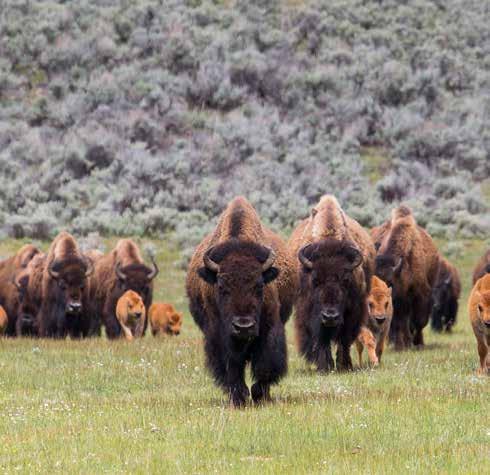
Yellowstone’s bison leave the park each year, and many run into their demise, not for being used as food, medicine, and other culturally significant regalia, but for being big, burly, freewilled animals. If the public wants to get involved to help save bison from unwarranted killing and waste due to fear, contact the Buffalo Field Campaign. They could always use help.
Benjamin Alva Polley is a place-based storyteller with stories published in Outside, Adventure Journal, Popular Science, Field & Stream, Esquire, Sierra, Audubon, Earth Island Journal, Modern Huntsman, and other publications at his website www.benjaminpolley.com/stories. He holds a master’s in Environmental Science and Natural Resource Journalism from the University of Montana.

Explore Big Sky 37 April 20 - May 3, 2023
A bison herd with calves in Lamar Valley. PHOTO BY NEAL HERBERT / NPS
OPINION
Low-stress handling techniques are used to move bison into holding pens to prepare for transfer to Fort Peck Indian Reservation.
PHOTO BY JACOB W. FRANK
OPINION
LOCAL KNOWLEDGE
RINGS OF TIME
BY PAUL SWENSON EBS COLUMNIST
In the last article, I introduced you all to the five common species of conifers that grow in the Big Sky area. I would like to build on this knowledge and introduce you to some new concepts that these trees can tell us about their ages, past climate, and how scientists know the type of water, from snowpack or summer rains, that is most important to our forests.
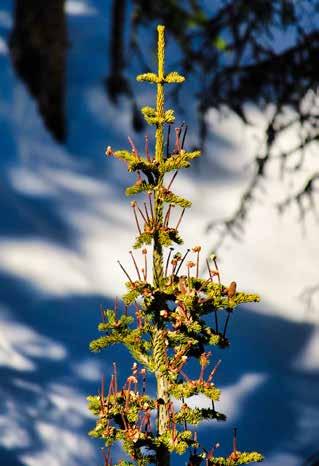
Since you have been observing trees now for two weeks, hopefully you’ve asked the question, “How old are these trees?” Let’s start with a visual estimate. When you look at a pine, fir, or spruce, there is usually a single “spike” of growth on the top. That is how much the tree grew last season. Then below that are layers of branches, each representing a year’s growth. In the photograph below you can see this subalpine fir has the top spike, plus nine layers of branches. This means that this section of tree represents nine years of growth. When you measure the average length of each section it is about four inches. Therefore, if we estimate the height of the tree to be 50 feet, the tree would be approximately 150 years old.
Some trees grow faster than this, some slower, so you can use approximately two years of growth for every foot of height. Therefore, if you estimate a tree’s height in feet, then multiply by two, it’s a good approximation for the age of the tree.
This technique works well for trees in the lower elevations, but as you approach tree line, about 9,000 feet, the growing season is short and the conditions harsh. This leads to stunted, twisted trees that grow very slowly. Some of the trees growing here are less than 10 feet tall, but in the case of a few whitebark pines in the Spanish Peaks, can exceed a thousand years of age.
A more accurate way to age a tree is by counting the rings in the trunk. There are boring tools that let you do this to living trees without harming them. But if you have one cut it’s easy to count the rings. See the photograph of a 7-inch radius lodgepole tree. Here I have marked every 10 rings representing 10 years of growth. The wide part of the ring represents the early part of the growing season, the very narrow, dark part of the ring, the late growing season, fall and winter. Counting from the center out, there are 194 rings, so this tree is 194-196 years old depending how far up the trunk this section came from.
There is an entire science dedicated to the study of tree rings: Dendrochronology. Using tree rings and their relative spacing, one can determine regional environmental changes, ages and lengths of major droughts, frequency of major avalanche cycles, and date archeological artifacts. Using a method called cross-dating, a reliable data set for historical climate can be found as far back as 14,000 years.
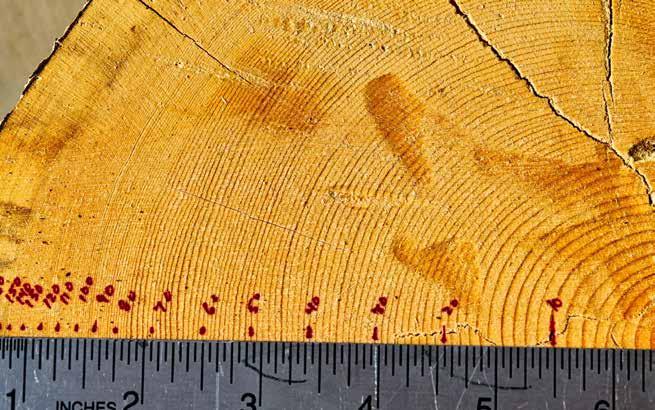
Another interesting use of dendrochronology is detecting forgeries of valuable wooden instruments, such as violins, cellos, and pianos.

The wood grain in these instruments displays the ring spacing of the trees they were made from. Knowing this pattern from cross-dating determines when the tree was harvested. Antonio Stradivari, probably the most well-known luthier of violins, built his instruments in the early 1700s. Since they are worth millions of dollars there have been countless forgeries made over the centuries. To make sure the wood is at least old enough for the violin the appropriate ring pattern must be found in the spruce top.
Last question for this column: “Do trees use the water from the snowpack, or summer rains, for most of its growth?” It takes a certain amount of thermal energy for water to evaporate, and that depends on the temperature of the water. The warmer the water, the more energy it has, so the faster it can evaporate. It’s why summers are more humid.
Oxygen has two common isotopes, O-16 and O-18 (which has two more neutrons). They both behave the same chemically, but the added mass of O-18 in water molecules means it takes more energy to evaporate. So summer water has a higher O-18 proportion than winter water.
Photosynthesis uses energy from light to combine water and carbon dioxide to make glucose which plants then combine to make larger carbohydrate molecules, like wood. Testing the oxygen from the carbohydrates found in the rings shows a depleted ratio of O-18, meaning that trees use more water from snowpack than from summer rains.
Paul Swenson has been living in and around the Big Sky area since 1966. He is a retired science teacher, fishing guide, Yellowstone guide and naturalist. Also an artist and photographer, Swenson focuses on the intricacies found in nature.
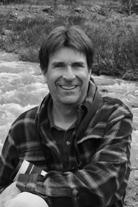
Explore Big Sky 38 April 20 - May 3, 20233
Lodgepole pine cross-section showing growth rings and associated ages. Notice the difference in width of each decade. The smaller the width, the slower the growth. PHOTO BY PAUL SWENSON
Top of a Subalpine Fir next to Iron Horse showing nine years of growth. PHOTO BY PAUL SWENSON
The spruce top of 180-year-old violin displaying the grain pattern used to date the top. PHOTO BY PAUL SWENSON
60 BIG SKY RESORT #10604, BIG SKY
1 BED | 2 BATH | 1,005 SQ FT
Ski-in/Ski-out condo with the ultimate location in Big Sky Resort’s main base area. The Summit Hotel has been completely renovated and this “Elbow Unit” has a commanding view of Lone Mountain, offers valet and room service, luxury resort ammenities and convenient access to full service restaurants, shops, bars. $775,000 #379540
KIRK DIGE 406-580-5475
45 TURKEY LEG RD #1002, BIG SKY
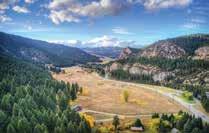

STUDIO | 1 BATH | 512 SQ FT

Stillwater Condos at Big Sky Ski and Summer Resort in Big Sky’s Mountain Village. Within close proximity to the ski slopes, biking, hiking, & restaurants. This Studio is located in a premier location on the ground floor in the upper portion of Building “A”. $575,000 #376470



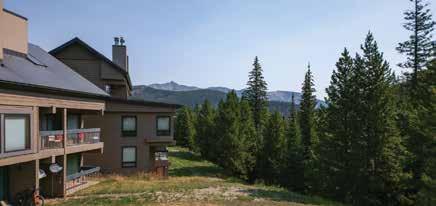

MAGGIE BIGGERSTAFF 406-580-6244
Why Choose ERA?
Maggie went above and beyond as our agent. She was professional, courteous, astute, timely, dedicated, accessible, and informative. We really couldn’t ask for anything more.”
- Kramer Family
406-995-3444
Robyn Erlenbush, CRB, Broker/Owner


Each office independently owned and operated.



Maggie Biggerstaff 406-580-6244
- Bobcats are elusive and nocturnal, so they are rarely spotted by humans. Although they are seldom seen, they roam throughout much of North America.


- Fierce hunters, bobcats can kill prey much bigger than themselves, but usually eat rabbits, birds, mice, squirrels and other smaller game.
- In some areas, bobcats are still trapped for their soft, spotted fur North American populations are believed to be quite large, with perhaps as many as one million cats in the United States alone. They face habitat destruction from agricultural and industrial development as well urban sprawl. The ever-expanding human population further limits their ranges.
D I D YO U K N OW?
Bobcat // Lynx rufus
R es p ect. P rot ect. C h er is h. Paid for by the animals in your backyard. Information provided by www.defenders.org and www.nationalgeographic.com
NPS PHOTO
ERABigSky.com
36 Center Lane, Big Sky, MT
“
BROKER/OWNERS Becky & Jerry Pape 406.995.4848 (Next to the Exxon) 406.580.5243 (Anytime) www.triplecreek.com 12 RUNNING BEAR, BIG HORN #68 - Premier downhill skiing access! - 3 bedrooms with en-suite bathrooms - Sold furnished with new exterior finishes $1,995,000 | MLS 373583 2440 US HWY 287 - CAMERON - Hunter’s paradise on 19 +/- acres - Fenced for horses with automatic waterers - Shop with attached living space $1,265,000 | MLS 371650 1255 FRANK RD - BELGRADE - 6.36 acres with a well & septic in place - NO HOA with light covenants - Bring your animals & build your dream home! $585,000 | MLS 374631 SOLD SOLD 78 MEADOW VILLAGE, UNIT E - LOCATION, LOCATION, LOCATION! - Commercial condo in the Meadow Village Center - 2,115+/- sf of office space in the heart of Big Sky $1,580,000 | MLS 377559 GALLATIN RD - NORTH GALLATIN CANYON - 25.22+/- acres in the Gallatin Canyon - No Covenants -Across the road from the Gallatin River & near trailheads $4,995,000 | MLS 356561
A LA CARTE LET’S TALK TUBERS
BY RACHEL HERGETT EBS COLUMNIST
Once upon a time, I was writing a script for an internet cooking segment. The idea was that I, a darn good selftaught cook, would be a counterpoint to an often inaccessible classically trained chef. My idea was to highlight ways simple ingredients could be made delicious. The potato was an easy choice. What could be more readily available than a potato? The segment never came to fruition, but the tubers stayed on my mind.
I love a potato. Who doesn’t? My family has a “secret” potato salad recipe, that is pretty much how everyone makes it, but with a bit of pickle juice mixed in. Cooks for family gatherings can never make too much mashed potatoes, which replaces potato salad on the table for any non picnic-style gathering. Any leftovers will get fried up with breakfast, a crispy buttery crust surrounding the pillowy mash and making it something new and wonderful.
Potatoes seem unmatched in their versatility. A potato pancake is a much different beast than a French fry, which is certainly no twin to the baked potato. Twice baked it transforms again. Potatoes are a global staple. Think Indian
samosas or Mexican potato tacos, Polish pierogi or even the Canadian poutine.
According to the (possibly biased) International Potato Center, potatoes are now the third most important global crop, after wheat and rice. So I was surprised to learn their role in global cuisine was a much more recent development.
The center is based out of Lima, Peru, near where the tubers were first cultivated by the Inca in the Andes Mountains nearly 10,000 years ago. There they remained until the latter half of the 1500s, when Spanish conquistadors brought them home to Europe. Cultivation spread.
Potatoes can thrive at most elevations. They use less water to grow than grains. And, most importantly, growing potatoes meant more food in the same space of land (This was the reason they became a staple in the diet in Ireland and why a potato blight played a role in the famine).

Oh, and as part of a balanced diet, they’re pretty good for you. Potatoes, according to the Washington Potato Commission, are a good source of potassium, protein, antioxidants, fiber and vitamin C. If you could only eat one food for the rest of your life, potatoes are the most well-rounded nutritionally, my cooking club partner told me this week. The meal was kosher and she contributed—you guessed it—
potatoes. Or more specifically, a potato kugel. Potatoes are a staple in my kitchen, so much so that I like to keep baked potatoes on hand at all times. These are often little golden potatoes — my favorite of the varieties that are readily available in the grocery stores. I throw them in my smart toaster oven (which I use so much it may deserve its own column) until firm but cooked, baking them at 350 degrees F for 2040 minutes depending on the size of the potato.
Cooked potatoes open a world of possibilities for quick additions to any meal.
Eat them as they are… they are baked potatoes. Load them up with butter and sour cream or ranch dressing, bacon bits and chives. Mash ‘em. Make a potato salad. Dice them and throw them in a pan with some bacon grease for crispy breakfast potatoes. Grate them for hash browns. Hasselback them. Smash them, coat them in olive oil, garlic, herbs and Parmesan and bake them again.
The potato possibilities seem endless.
Rachel Hergett is a foodie and cook from Montana. She is arts editor emeritus at the Bozeman Daily Chronicle and has written for publications such as Food Network Magazine and Montana Quarterly. Rachel is also the host of the Magic Monday Show on KGLT-FM and teaches at Montana State University.

Explore Big Sky 40 April 20 - May 3, 2023
OPINION
A farmer holds ripe organic potatoes in field. ADOBE STOCK


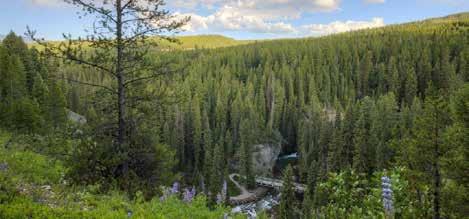

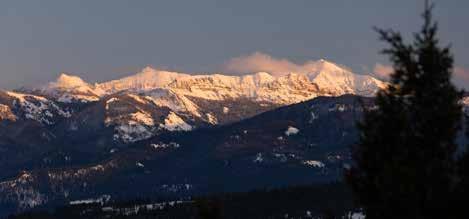

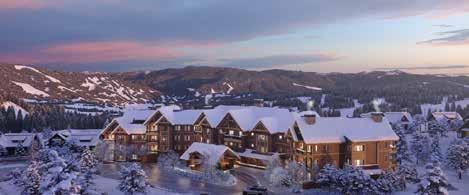

MEADOW VILLAGE MEADOW VILLAGE SPANISH PEAKS MOUNTAIN CLUB TBD Ousel Falls Road #17 MLS # 374620 | 3.42 +/- ACRES | $2,900,000 MOUNTAIN VILLAGE 60 Big Sky Resort Unit #10902 MLS # 379503 | 1 BED + 2 BATH | 886 +/- SQ. FT. | $999,000 472 Firelight MLS # 379504 | 3 BED + 3 BATH | 1,859 +/- SQ. FT. | $1,495,000 12 Blacktail Buck MLS # 381259 | 3 BED + 3 BATH | 2,470 +/- SQ. FT. | $1,575,000 ALL INFORMATION PROVIDED IS DEEMED RELIABLE BUT IS NOT GUARANTEED AND SHOULD BE INDEPENDENTLY VERIFIED. INFORMATION AND DEPICTIONS ARE SUBJECT TO ERRORS, OMISSIONS, PRIOR SALES, PRICE CHANGES OR WITHDRAWAL WITHOUT NOTICE. NO GOVERNMENTAL AGENCY HAS JUDGED THE MERITS OR VALUE, IF ANY, OF THE INFORMATION CONTAINED IN THIS ADVERTISEMENT OR ANY REAL ESTATE DESCRIBED OR DEPICTED HEREIN. THIS MATERIAL SHALL NOT CONSTITUTE AN OFFER TO SELL IN ANY STATE OR OTHER JURISDICTION WHERE PRIOR REGISTRATION IS REQUIRED OR WHERE SUCH AN OFFER WOULD BE PROHIBITED, AND THIS SHALL NOT CONSTITUTE A SOLICITATION IF YOU ARE WORKING WITH ANOTHER REAL ESTATE AGENT. NOTHING HEREIN SHALL BE CONSTRUED AS LEGAL, TAX, ACCOUNTING, OR OTHER PROFESSIONAL ADVICE. SPANISH PEAKS MOUNTAIN CLUB 852 Outlook Trail MLS # 379529 | 10.05 +/- ACRES | $6,500,000 MOONLIGHT BASIN TBD One&Only Private Home #17 MLS # 376786 | 6 BED + 6 BATH | 4,818 SQ. FT. | $12,250,000 SPANISH PEAKS MOUNTAIN CLUB 824 Settlement Trail #2A MLS # 374630 | 4 BED + 4 BATH | 2,460 +/- SQ. FT. | $2,000,000 MEADOW VILLAGE 136B Pheasant Tail Lane MLS # 380909 | 2 BED + 2 BATH + 1 HALF BATH | 1,488 +/- SQ. FT. | $1,550,000 Quarter-Ownership Opportunity 25 TOWN CENTER AVENUE | 995 SETTLEMENT TRAIL | 66 MOUNTAIN LOOP ROAD | 181 CLUBHOUSE DRIVE
 BY DAVE MARSTON WRITERS ON THE RANGE
BY DAVE MARSTON WRITERS ON THE RANGE
Reservoir manager Ken Beck says wryly that he has lots of water coming his way, “and I need a hole to put it in.”
In southern Colorado, Beck is the superintendent of Pine River Irrigation District and Vallecito Reservoir, which catches water from the 13,000 and 14,000-foot-high peaks of the Weminuche Wilderness. It’s a place so wild and beautiful that Teddy Roosevelt protected it in 1905 by creating the 1.8-million-acre San Juan National Forest.
The name Vallecito means “little valley” in Spanish, and the reservoir stores water for the town of Bayfield, population 2,838, as well as providing supplemental irrigation for 65,000 acres of Tribal and non-tribal land to the south.

This winter, Beck has been faced with a near-record snowpack, now expected to turn into some 320,000 acrefeet of water. His 82-year-old reservoir, however, can only hold 125,000 acre-feet. What’s more, snow was still falling in early April.
In late March, Beck saw moisture going up dramatically. Any reservoir manager has to deal with uncertainty, but Beck’s job, which he has held for seven years, has an Achilles heel.
“I was told by the Bureau (of Reclamation) to manage my reservoir so I don’t use my spillway,” he says. “We’re restricted because of the needed repairs.”

Spillways are critical elements of any dam. When oncoming water overwhelms the intakes for hydroelectric and outlet works, excess water flows into the riverbed below. Beck has few options without the safety valve of a dependable spillway, yet he may be forced to use it.
Beck is well aware that dams can fail. Six major dams have failed in Colorado since 1950, with the biggest disaster occurring in Larimer County, in 1982. When its Lawn Lake Dam failed, three people died and property damage amounted to $31 million.
Beck says Vallecito’s management challenges came to the fore after “the big wakeup call of 2017, when Lake Oroville fell apart in California.” California’s tallest dam, Oroville, resembles Vallecito in being earthen built. It nearly failed when its spillways began eroding during high runoff.

Soon after, Vallecito’s dam was closely inspected, revealing leaks and erosion in its spillway. The Bureau of Reclamation, which built the dam, patched up the spillway but also put the dam “under review.”
By the end of March, Beck had released 15 times more water daily than during the previous month. By late April, Beck estimates, the formerly half-empty Vallecito Reservoir be just 20% full, better prepared for what could be an epic snowmelt.
In the arid West, this makes Beck a reservoir apostate. Spring is when reservoir managers follow a creed that’s been honed during periodic drought: Store as much water as possible as early as possible.
For Beck, that’s not wise. “But don’t mistake my being meek as weak,” he says. “I’ve got an Abe Lincoln style: Wrap good people around you and encourage them to say things you might not want to hear.”
Beck has surrounded himself with a team of straight shooters, though he relies most on Susan Behery, a Bureau of Reclamation hydrologic engineer, based in Durango. With Behery’s advice, Beck decided that Vallecito’s reservoir needed to be dramatically drawn down.

Evidence for doing that was obvious this winter as roofs sagged, driveways became mini-canyons, and snow at the nearby Purgatory ski area outside Durango reached 20 feet high in places. USDA SNOTEL sites above Vallecito Reservoir measured snowpacks at 170% and 180% of normal.

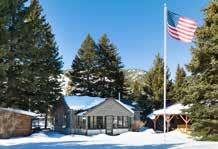


With so much big water ready to head their way, a reservoir manager might have decided to operate quietly and hope for the best. Instead, Behery says, Beck has been transparent with the public and collaborative. She admires Beck for it.
“I’m an engineer and nobody gets into engineering because they're super good with people. I don’t do the fluffy stuff.”
Beck makes a lot of information available. He holds open meetings and emails a weekly newsletter to anyone interested. “A lot of people are asking why we’re turning out more water,” he says, “but I just met with farmers that say I haven’t brought it down enough.”
What does Beck predict will happen to his reservoir as snowmelt barrels toward Vallecito Reservoir?
“If spring rains come it will add to the pucker factor. But the spillway will hold.” Meanwhile, he’s a little bit on edge.

Dave Marston is the publisher of Writers on the Range, writersontherange.org, an independent nonprofit dedicated to spurring lively conversation about the West. He lives in Durango, Colorado.


Explore Big Sky 43 April 20 - May 3, 2023
OPINION
WRITERS ON THE RANGE A COLORADO RESERVOIR GETS READY FOR AN EPIC SNOWMELT STACY OSSORIO Broker, Private Office Advisor 406-539-8553 bigskybozemanrealestate.com stacy.ossorio@gmail.com TRUST EXPERIENCE Your trusted Big Sky real estate Advisor and community connection. Providing exceptional service to buyers and sellers of Big Sky properties for 30 years. ©2023 Engel & Völkers. All rights reserved. Each brokerage independently owned and operated. All information provided is deemed reliable but is not guaranteed and should be independently verified. If your property is currently represented by a real estate broker, this is not an attempt to solicit your listing. Engel & Völkers and its independent License Partners are Equal Opportunity Employers and fully support the principles of the Fair Housing Act. 2495 Little Coyote Road, Big Sky Meadow Village Location 3 Beds | 3 Bath | Bonus Room | +/- 2,520 Sqft. MLS# 376274 | $1,790,000 | Furnished 54245 Gallatin Road, Big Sky Approx. 150 ft of Gallatin River Frontage 2 Beds | 1 Baths | +/- 1,254 Sqft. MLS# 380263 | $2,100,000 | Furnished
ENJOYING THE RIDE
DON’T WAIT UNTIL APRIL TO CREATE YOUR TAX STRATEGY
including fixed and variable annuities that utilize growth-oriented, professionally managed, and diversified separate accounts. Finally, for those interested in actively investing in real estate, you can utilize 1031 exchanges for tax-deferral of physical rental real estate.
Again, there’s a clear difference between tax preparation and strategic tax planning, whereas the former takes place once per year, and the latter should be considered in all aspects of your strategic financial plan and revisited continuously. Working with a financial advisor and incorporating different tax strategies across your financial plan allows you more potential in reaching your financial goals and limiting tax liability and allows you to enjoy the ride.
Michael Hilliard is a financial advisor with Shore to Summit Wealth Management with more than 25 years of experience. He lives in Severna Park, MD with his wife and two college aged children.
 MICHAEL HILLIARD, CHFC, CLU, CFP™
MICHAEL HILLIARD, CHFC, CLU, CFP™
Sponsored article
When people think of April, many think of filing their taxes; but tax strategies should be a continuous yearlong process. There is a difference between tax preparation and tax planning, the latter being an integral part of having a strategic financial plan.

One of the more symbiotic relationships in financial planning is tax-efficient investing. Just like clients are encouraged to diversify their investments, they should also consider diversifying how their portfolio assets are taxed and seek tax efficiency throughout. One should consider a three-prong process:
Pre tax, tax-deferred, taxable: These are assets, placed mainly through retirement plans at the workplace, allowing investment directly from your paycheck before taxes. These assets have the potential to grow tax-deferred until they are distributed years later. Many of these plans also allow for a company match. The most common programs are qualified retirement plans (QRPs) which provide defined contribution, such as 401ks (for-profit companies), 403(b)s (non-profit organizations), governmental 457s (state/local government employees), and Thrift Savings Plans (federal employees). However, some employers may offer a defined benefit retirement plan such as a pension.
For the self-employed, depending on whether you have employees, you can utilize SEP IRAs, SIMPLEs, Solo 401ks, and Defined Benefit plans. If your Modified Adjusted Gross Income allows, you can also adopt this tax-deferred savings strategy through a Traditional IRA, subject to annual limits. This first strategy may allow the taxpayer to reduce their tax liability during the accumulation period but pay taxes upon distribution once they have reached retirement age, hopefully at a lower tax rate.
Post tax, tax-deferred, tax-free: These assets work the opposite as option one. Here, you’ve
already paid taxes on money being contributed to the account. This money then has the potential to grow, tax deferred, until retirement age, at which point a qualified distribution would be tax free, and they’re placed into investments that grow tax-deferred and can eventually be withdrawn tax-free. The most common vehicles in this space are Roth IRAs, designated Roth QRP accounts, 529 Plans, and Coverdell Education Savings accounts. Here are the two main Roth IRA strategies:
a. Contributions– the same contribution limits apply to Roth IRAs as Traditional IRAs. The total contribution to all of your Traditional and Roth IRAs cannot be more than the annual maximum for your age or 100% of earned income, whichever is less. Investment earnings are distributed tax-free in retirement, if a fiveyear waiting period has been met and you are at least age 59 and a half, or as a result of your disability, or using the first-time homebuyer exception, or taken by your beneficiaries due to your death. Many retirement plans have designated Roth accounts, contribution limits and distribution rules are different than for a Roth IRA.
b. Conversions – An excellent way to benefit from tax-advantaged growth potential and possible tax-free distributions may be to convert your Traditional IRA or QRP eligible rollover distribution to a Roth IRA.4 It is important to remember that you must have a triggering event, such as separation of service, to be eligible to make distributions from your QRP. At the time of conversion, you will pay the appropriate taxes due, but the benefits of tax-free income in retirement may justify the conversion. One benefit is that any earnings would be distributed tax-free, if the Roth IRA has been open for longer than five years and you are at least age 59 and a half, or you are disabled, or you are using the first-time homebuyer exception.
3) Taxable but tax-efficient: These assets are invested as post-tax dollars, but are tax efficient. Typical examples of this are tax-free municipal bonds that can yield tax free income, and aggressive growth stocks, that allow for very little 1099B, 1099DIV, or 1099INT taxation and are usually subject to lower capital gains tax rates. Annuities also allow for tax-deferred growth potential and come in a variety of types,
Wells Fargo Advisors Financial Network is not a legal or tax advisor. Be sure to consult your own tax advisor and investment professional before taking any action that may involve tax consequences.
Wells Fargo Advisors Financial Network did not assist in the preparation of this report, and its accuracy and completeness are not guaranteed. The opinions expressed in this report are those of the author(s) and are not necessarily those of Wells Fargo Advisors Financial Network or its affiliates. The material has been prepared or is distributed solely for information purposes and is not a solicitation or an offer to buy any security or instrument or to participate in any trading strategy Wells Fargo Advisors Financial Network and Shore to Summit Wealth Management are not legal or tax advisors. You should consult with your attorney, accountant and/or estate planner before taking any action.
Investment products and services are offered through Wells Fargo Advisors Financial Network, LLC (WFAFN), Member SIPC. Shore to Summit Wealth Management is a separate entity from WFAFN. Shore to Summit Wealth Management is located at 105 E. Oak Street, Unit 1A Bozeman, MT 59715 # 406-219-2900
Insurance products are offered through our affiliated nonbank insurance agencies.
Withdrawals of earnings are subject to ordinary income tax. In addition, a federal 10% penalty may apply to withdrawals taken prior to age 59½ and surrender charges generally apply.
There are many types of distribution options available to an investor when taking money from an annuity. These options include a lump sum, partial withdrawals, systematic withdrawals and annuitization. All withdrawals of earnings will be fully taxable and if taken before the age of 59 1/2 may be subject to a 10% IRS penalty. For variable contracts, please see the prospectus for complete information on distribution options with annuities.
Fixed annuities may have a higher initial interest rate which is guaranteed for a limited time period only. At the end of the guarantee period, the contract may renew at a lower rate.
Variable annuities are long-term investments appropriate for retirement funding and are subject to market fluctuations and investment risk.
Explore Big Sky 44 April 20 - May 3, 20233 OPINION
Stock image courtesy of Shore to Summit Wealth Management
BIG SKY BEATS
BIG SKY BEATS: GROWING/DYING
 BY JULIA BARTON
BY JULIA BARTON
Spring is a time of growth. Seeds that rooted themselves deep in the soil and have hid beneath snow and darkness for a few months will soon sprout and cover the ground in newness and life. At the same time, winter draws to a close, replacing the soft touch of snow with a reminder that time continues to move whether we’re ready or not. Spring is a time of change. This playlist is inspired by the song “Growing/Dying” by the Backseat Lovers, which explores how growth, possibilities, change, setbacks and challenges are all forcefully tethered together. “Why does the plant on the windowsill reflect my state of mind, growing and dying all the time,” the lyrics ponder. I hope this playlist helps you cope with and grow through the changing of seasons.
1. “Growing/Dying” by the Backseat Lovers
2. “It’s Called: Freefall” by Rainbow Kitten Surprise
3. “Laramee” by Richy Mitch & The Coal Miners
4. “Bender” by MyKey
5. “The View Between Villages” by Noah Kahan
6. “Witness” by Mt. Joy
7. “Let It All Out (10:05)” by COIN
8. “Give Up Baby Go” by Peach Pit
9. “Yes I’m Changing” by Tame Impala
10. “Close Your Eyes” by the Backseat Lovers
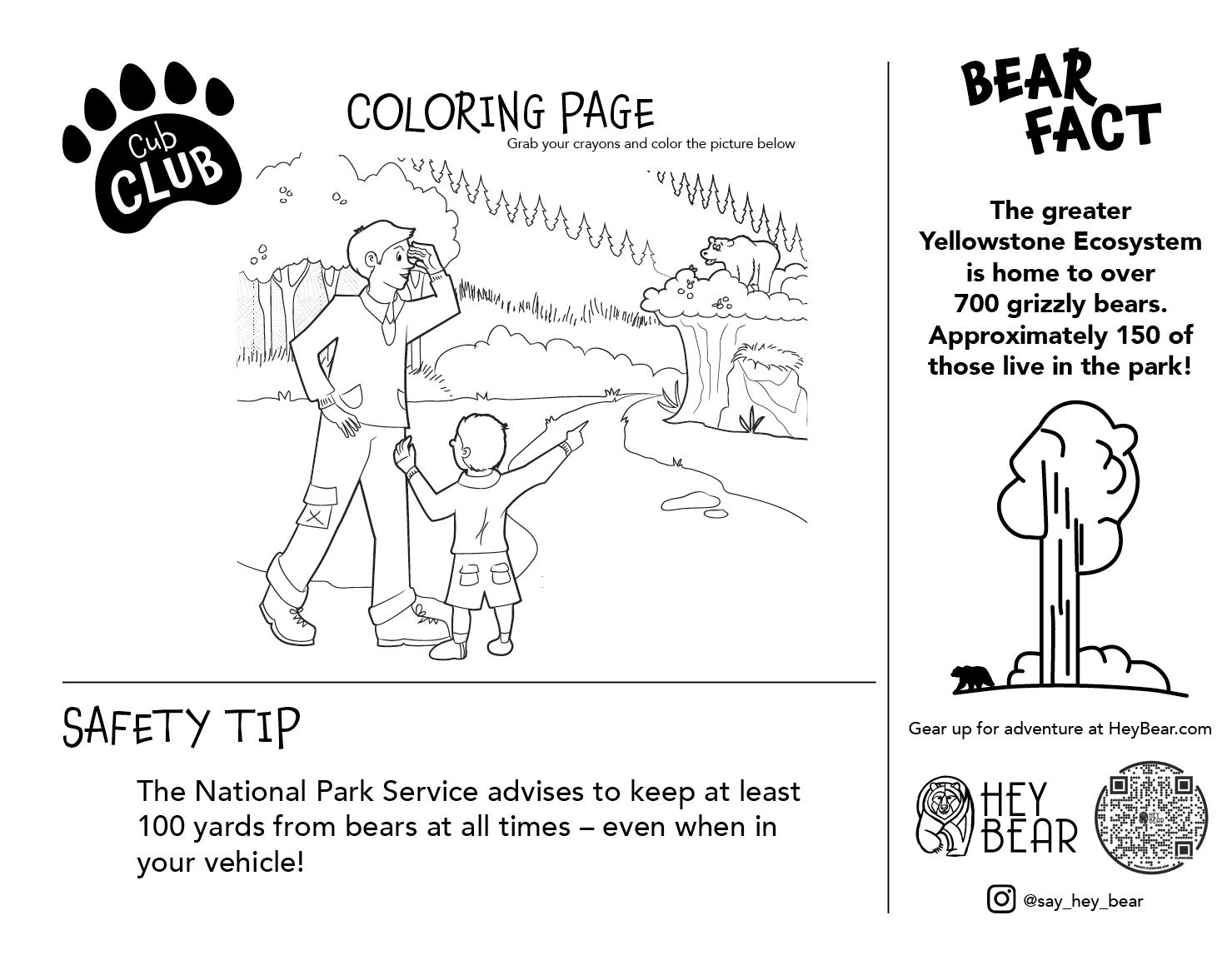
Explore Big Sky 45 April 20 - May 3, 2023 FUN
INTRODUCING PHASE ONE AT URBAN + FARM

LISTED BY Darren Streets | 406.570.4862 | darren@outlaw.realty
PHASE ONE AT URBAN + FARM
Bozeman, MT
8.72 ± Acres

Listed at $9.3M
Phase One consists of 8.72± acres located within the 106± acre Urban + Farm mixed-use and master-planned community situated in Bozeman’s growing west side. The Phase One parcel provides an excellent opportunity for developers to build a total of 64 residential units, comprising of 21 single-family homes and 43 townhomes. With amazing views in all directions as well as walking distance to many restaurants and shopping amenities this location cannot be beat! Parcel lies within city limits and will have city utilities installed this summer. With an excellent per door price of $160K per single family lot door and $135K per multi-family lot door, this parcel is an extremely competitively priced development parcel.
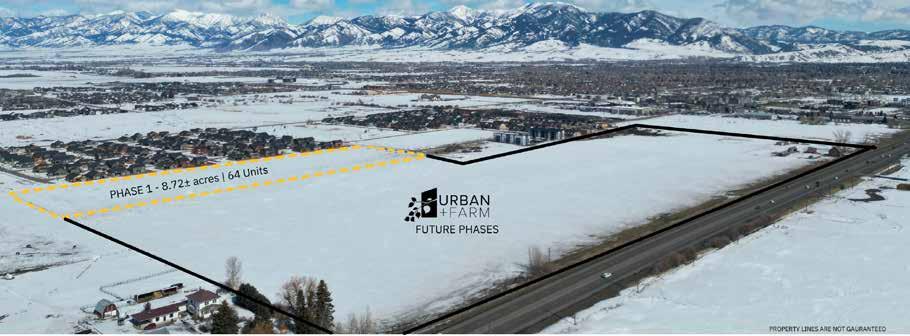
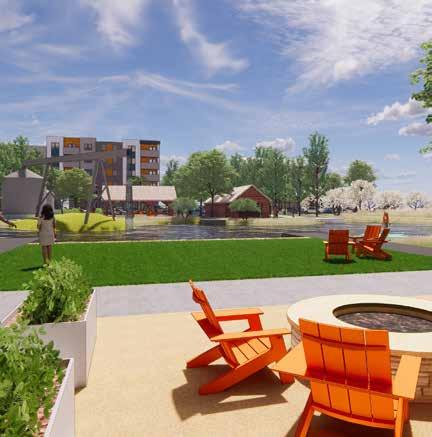
All information given is considered reliable, but because it has been supplied by third parties, we cannot represent that it is accurate or complete, and it should not be relied upon as such. These offerings are subject to errors, omissions, and changes including price or withdrawal without notice. All rights reserved. Equal Housing Opportunity. If you currently have a listing agreement or buyer broker agreement with another agent, this is not a solicitation to change. ©2023 Outlaw Realty www.outlaw.realty
SCAN HERETOLEARN M ERO





URBANFARMBOZEMAN.COM | 406.995.2404 • Two and three-bedroom options • Spacious floor plans • Granite countertops and stainless steel appliances • Second-level bonus and laundry rooms • Pet friendly • Private patio off the dining room • Covered front porch • EV chargers in every home • Parcel lockers • Flexible lease terms • Discounted cable and internet package • 24 hour emergency assistance • Connection to Norton Ranch neighborhood • Walking distance to The Market shops, restaurants, breweries, and live music, as well as The Ridge Athletic Club AMENITIES SCAN HERETOLEARN M O ER BOZEMAN'S FIRST SINGLE FAMILY RENTAL COMMUNITY NOW LEASING 3 BEDROOM | 2.5 BATHROOM SFH WITH GARAGES AVAILABLE MAY 15!
PEAK SKIS SHOWROOM




Located in Bozeman, en route to Big Sky, the Peak Skis Showroom is a place to shop our lineup of skis, browse fine goods crafted by Montana locals; or just hang out at one of our movie premieres, ski clinics, and barbecues 245 Quail Run Road Bozeman, MT 59718 (406)-577-8328 peakskis.com












































 BY VICTORIA EAVIS MONTANA FREE PRESS
BY VICTORIA EAVIS MONTANA FREE PRESS







































































 BY JULIA BARTON
BY JULIA BARTON
















 BY MIRA BRODY
BY MIRA BRODY








































 BY DAVE MARSTON WRITERS ON THE RANGE
BY DAVE MARSTON WRITERS ON THE RANGE










 MICHAEL HILLIARD, CHFC, CLU, CFP™
MICHAEL HILLIARD, CHFC, CLU, CFP™

 BY JULIA BARTON
BY JULIA BARTON












